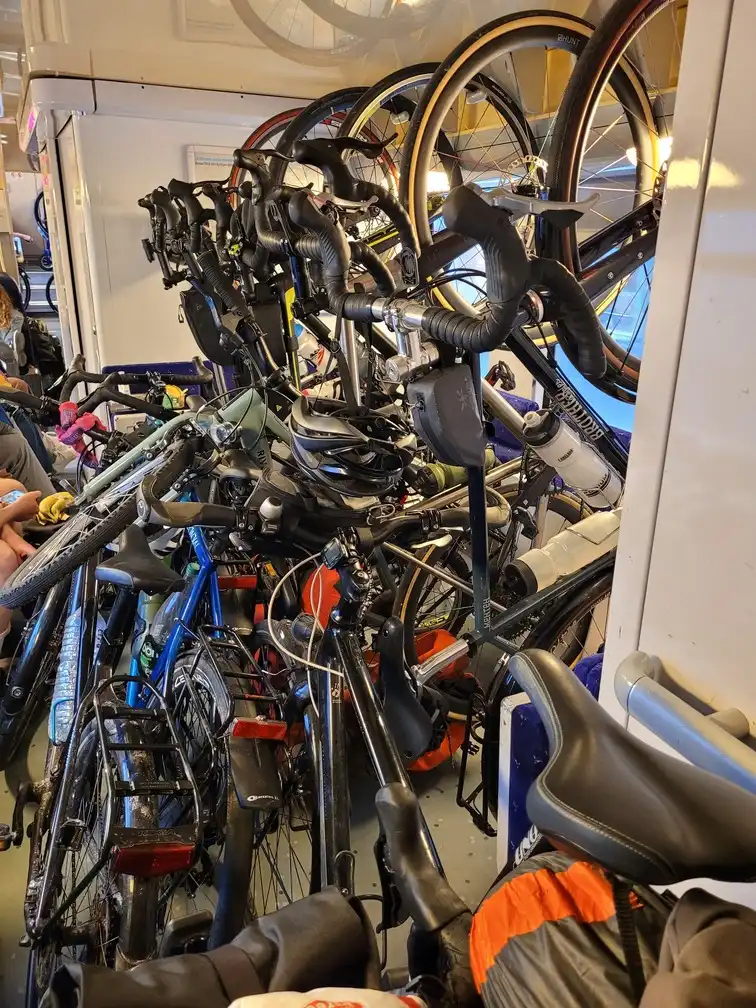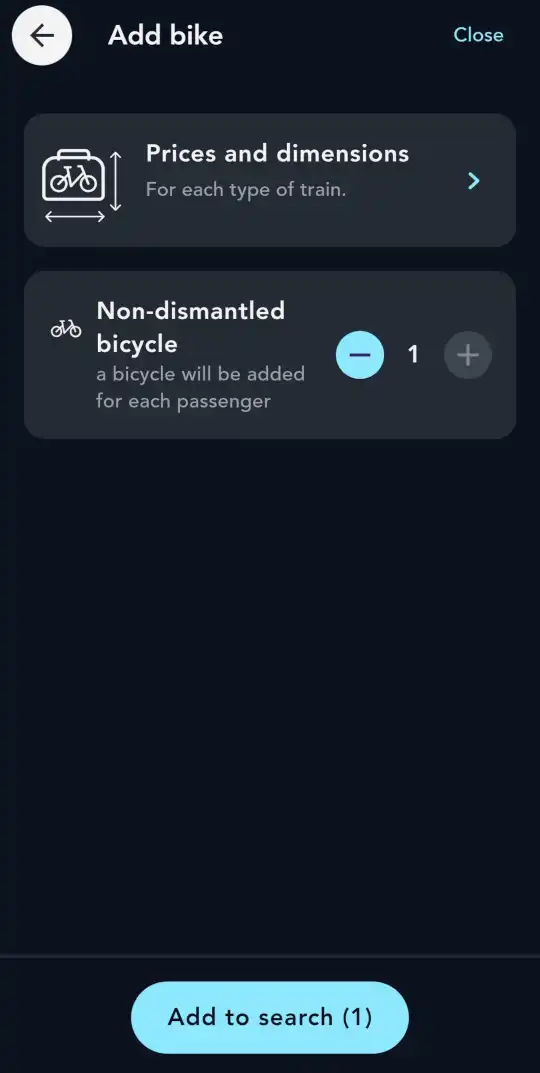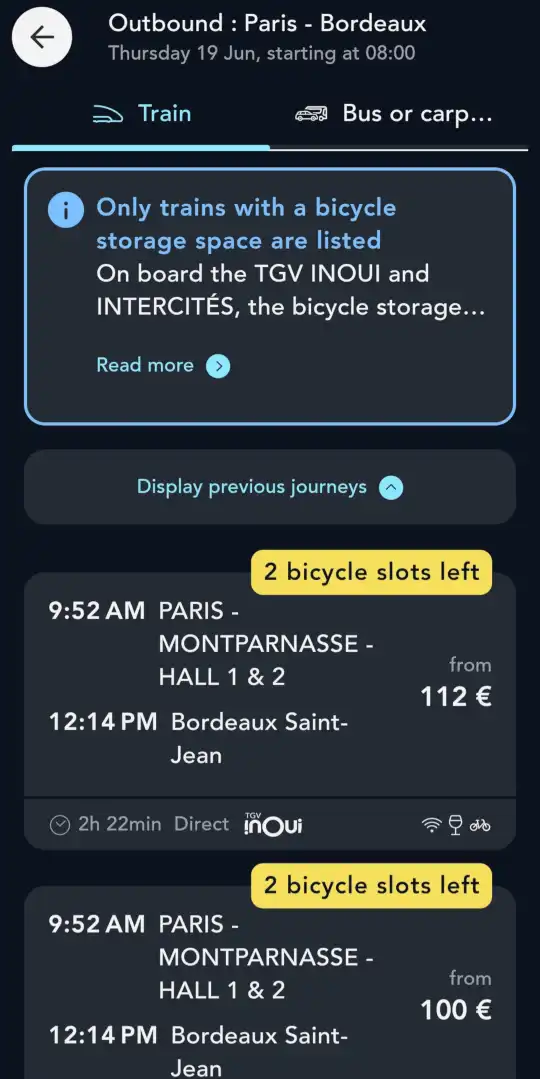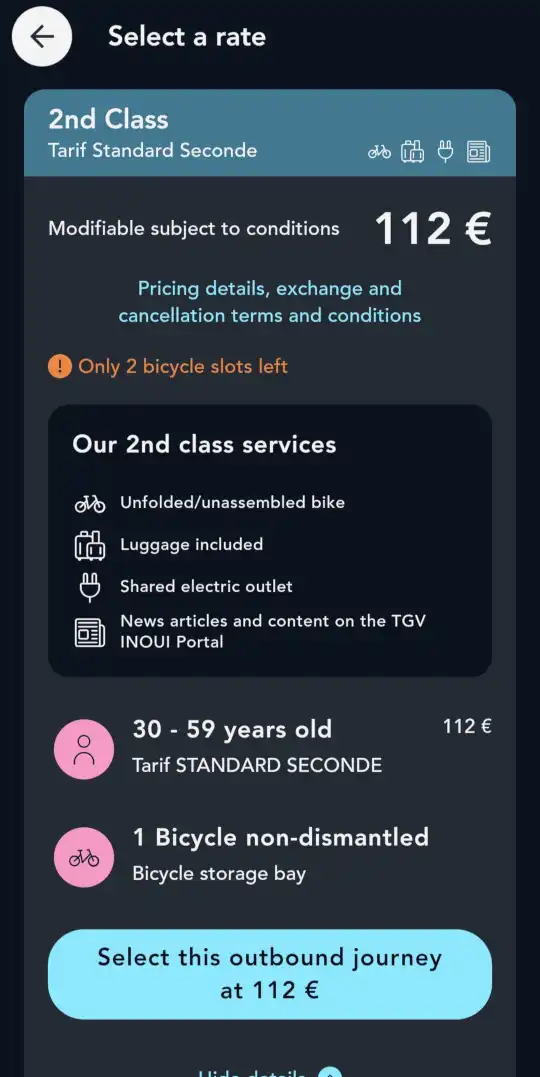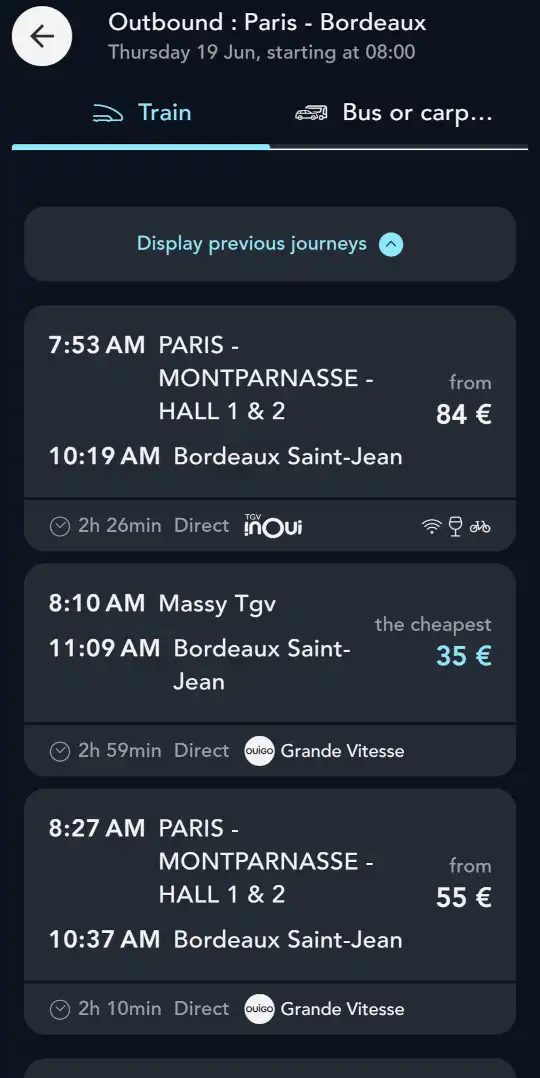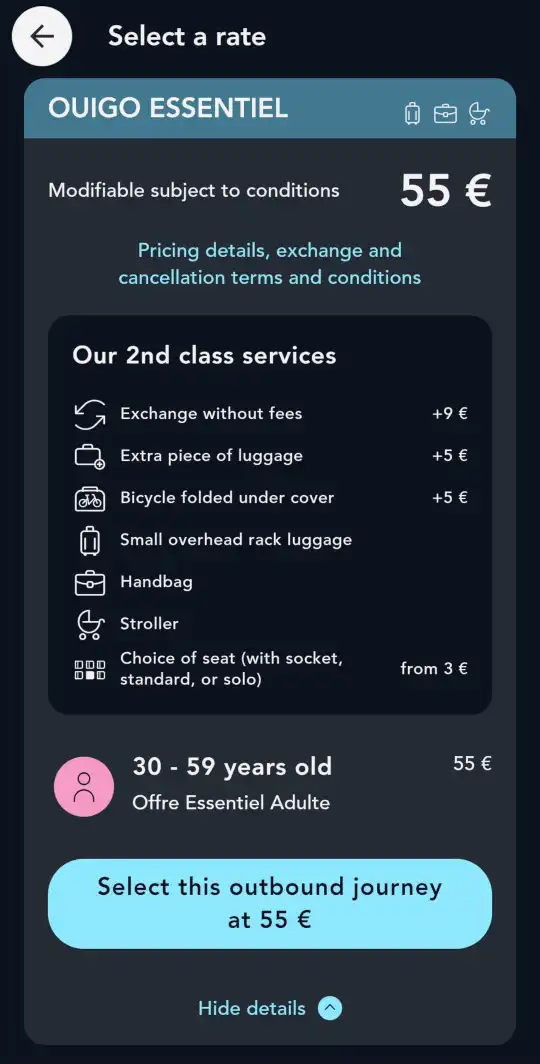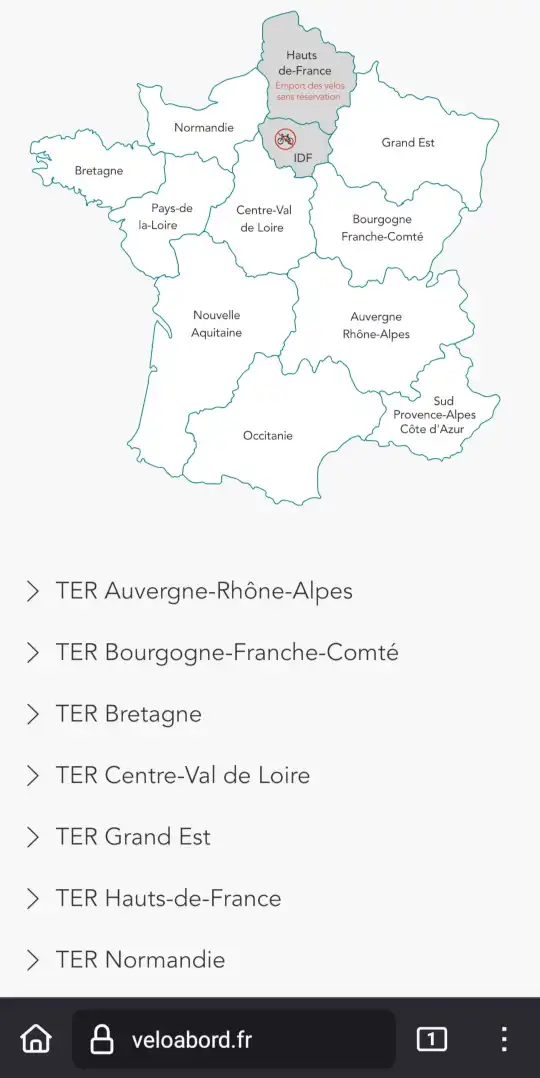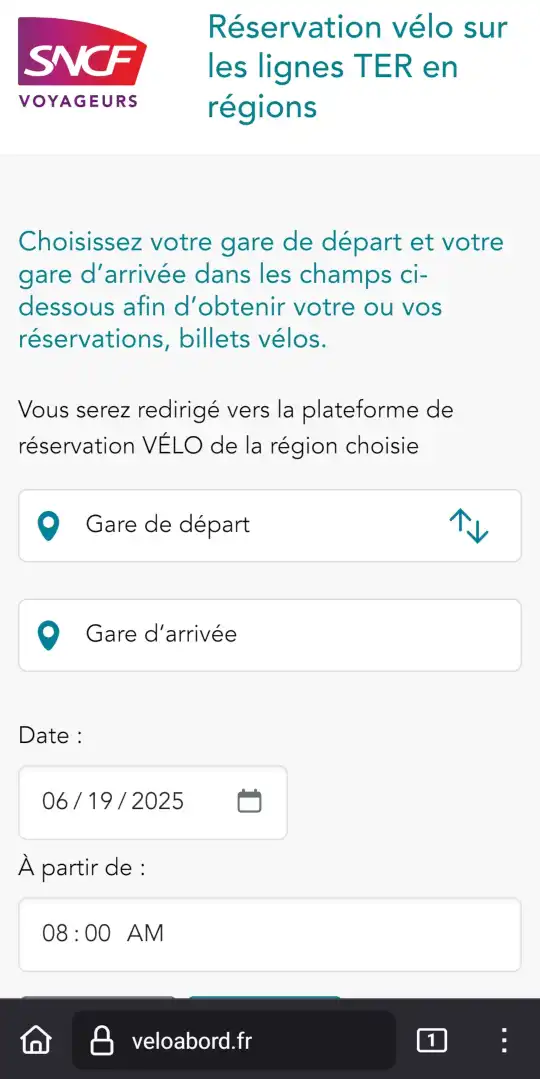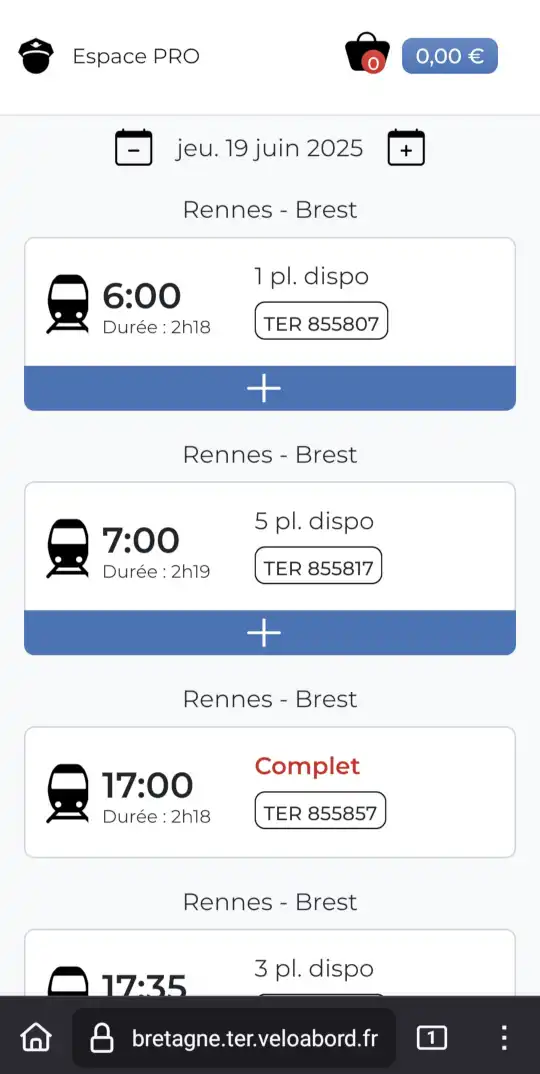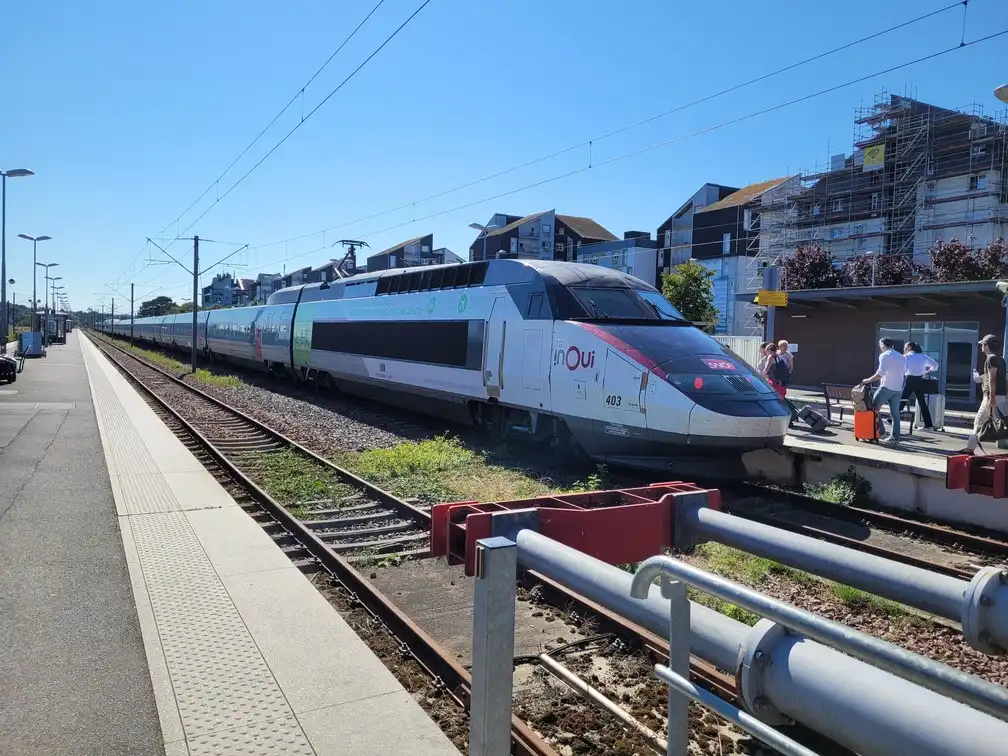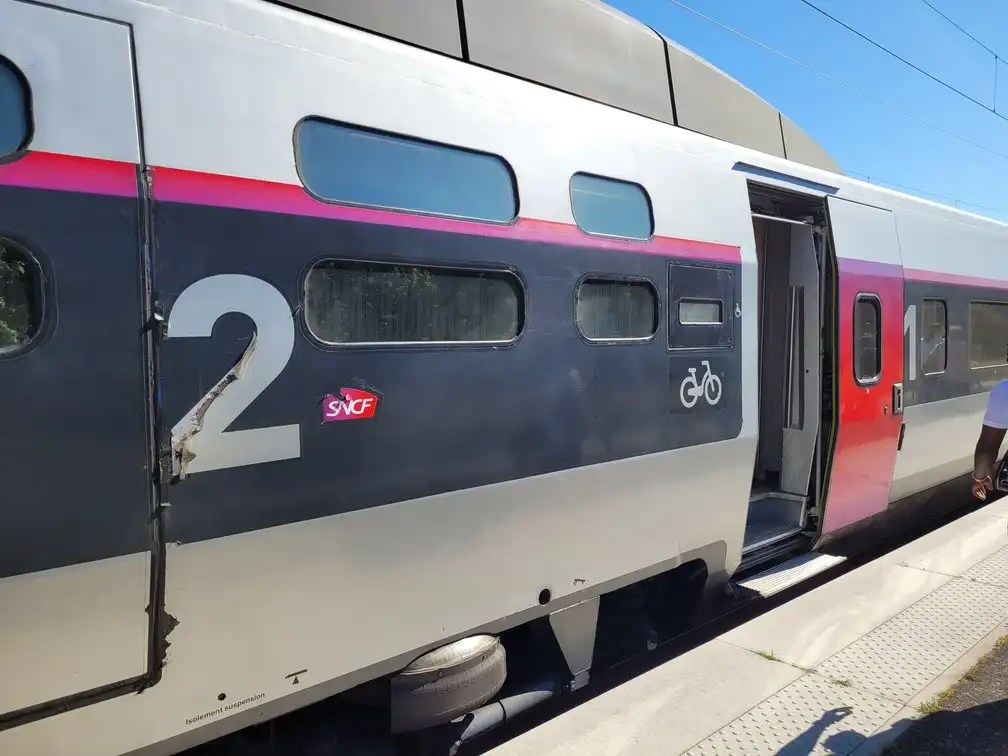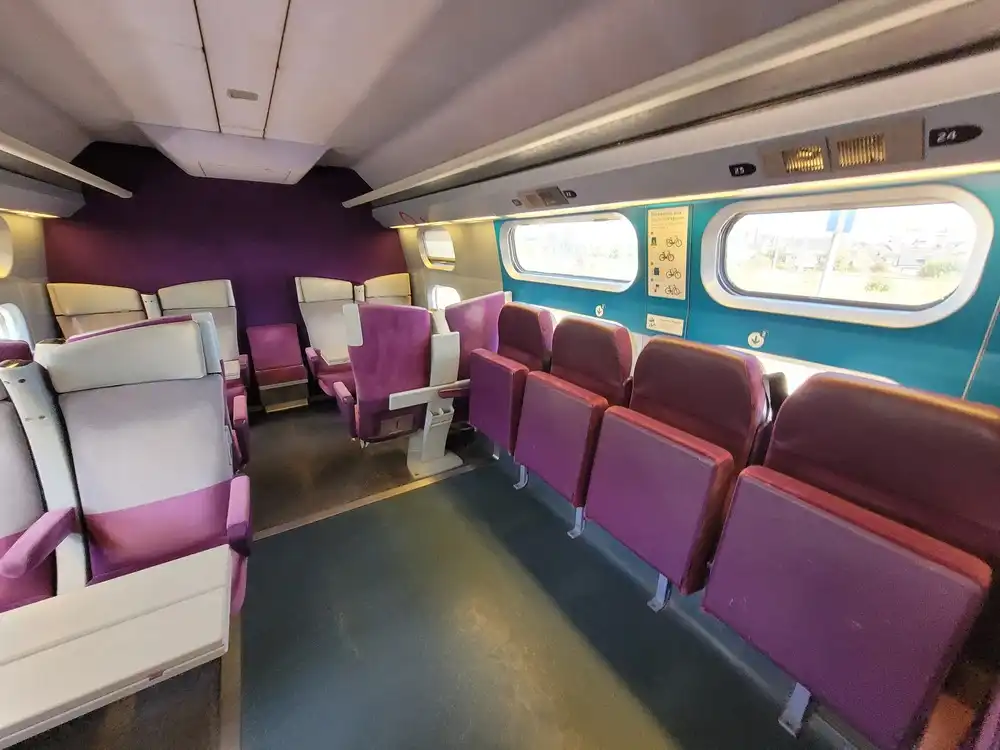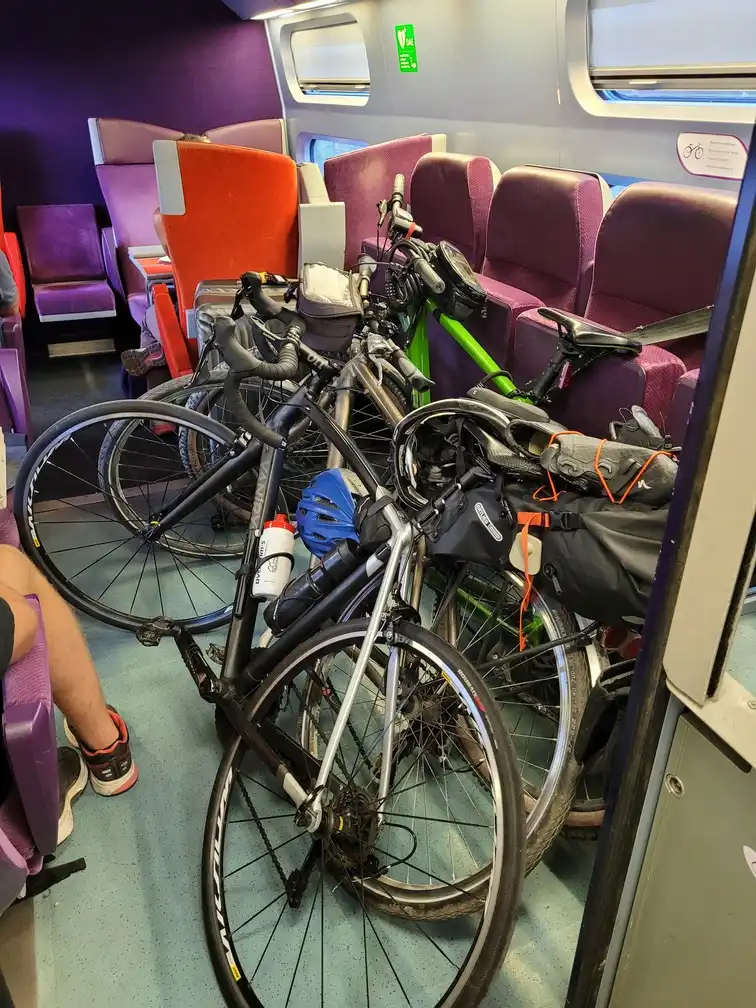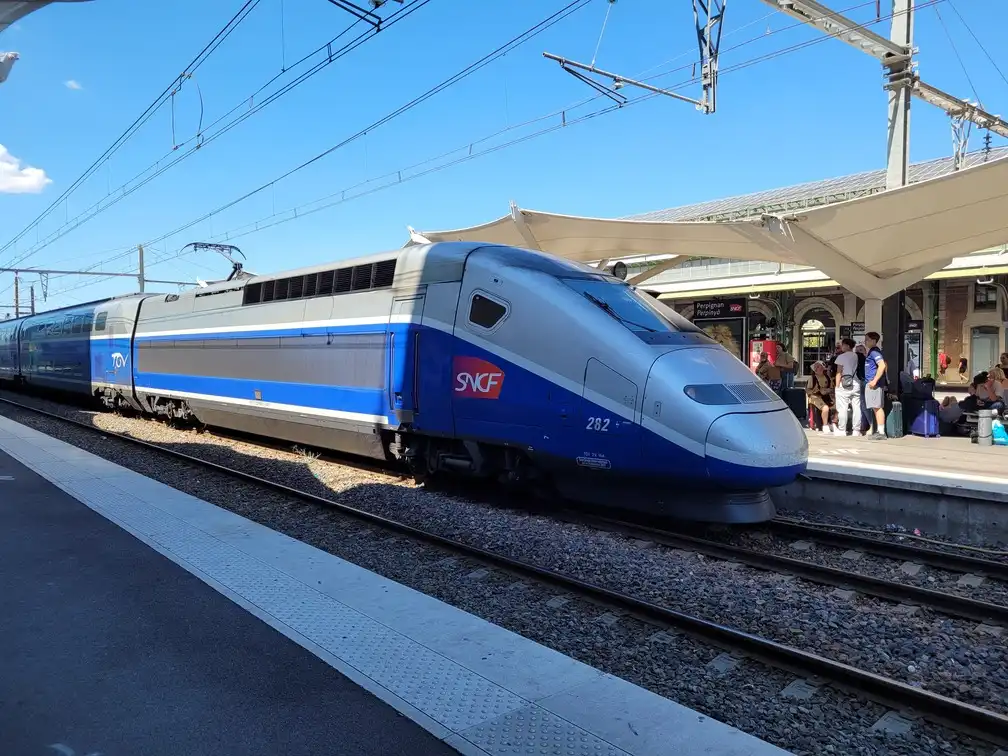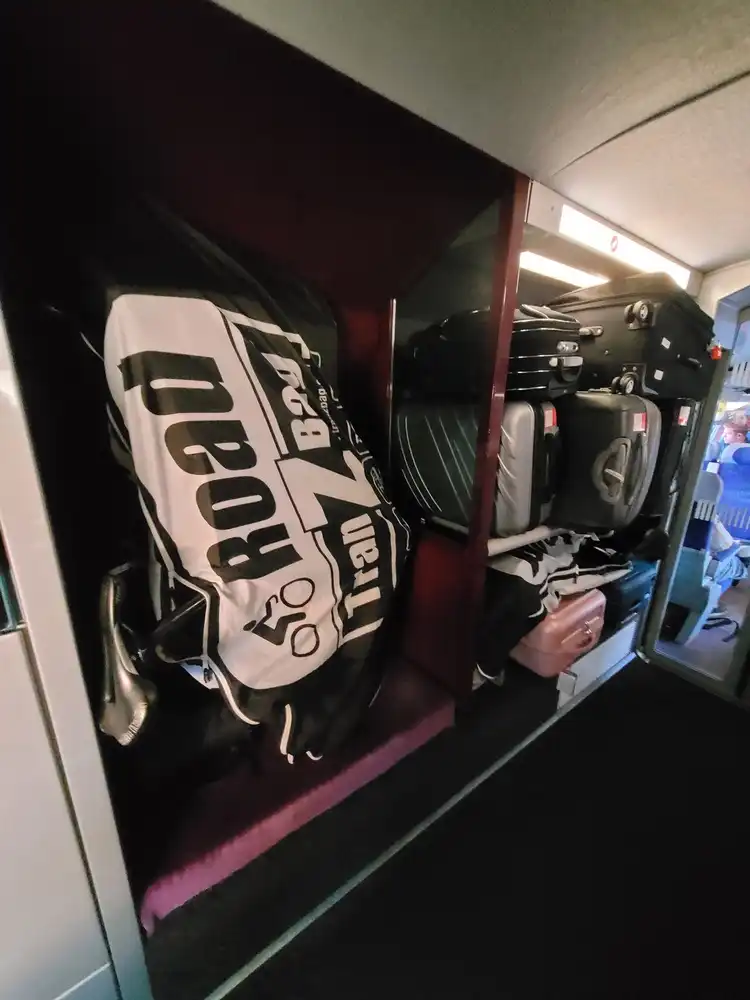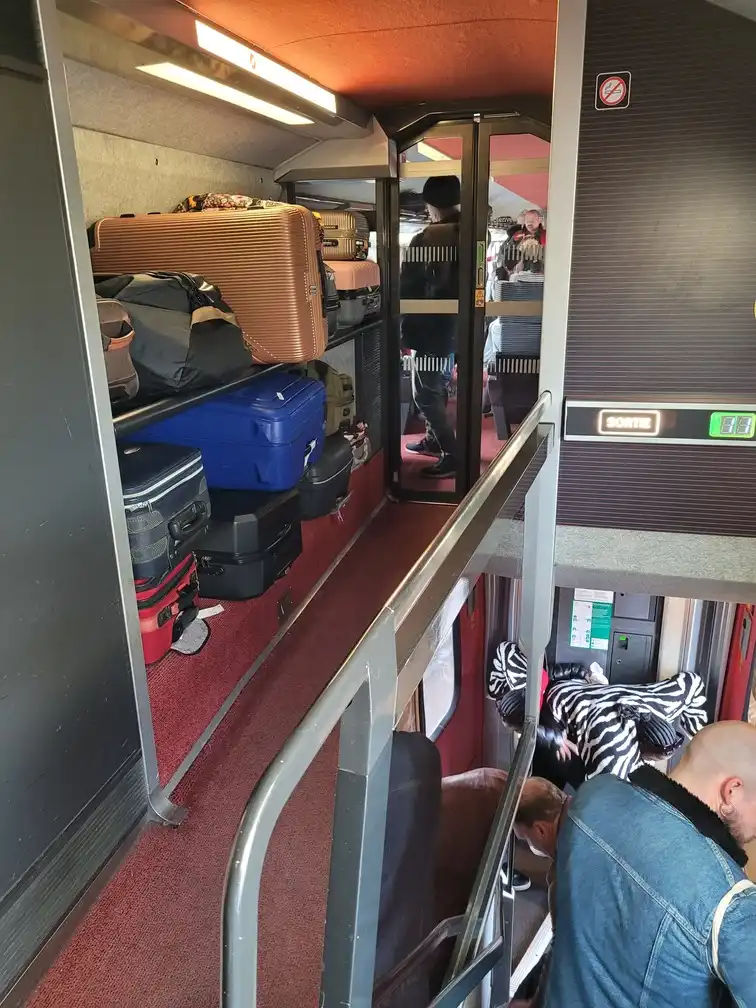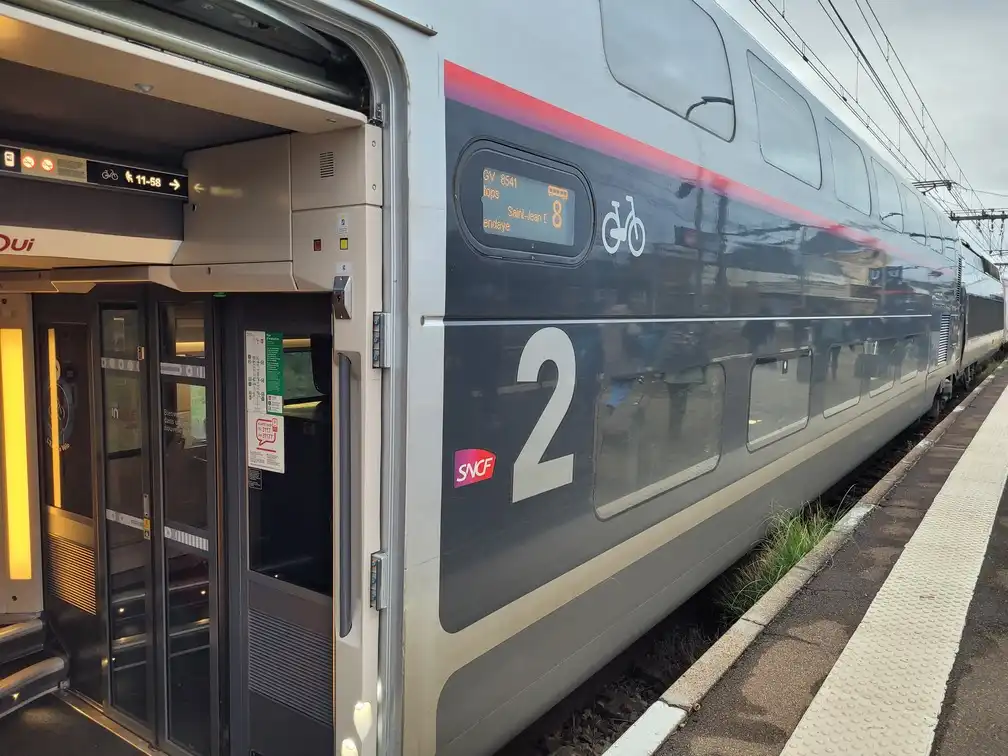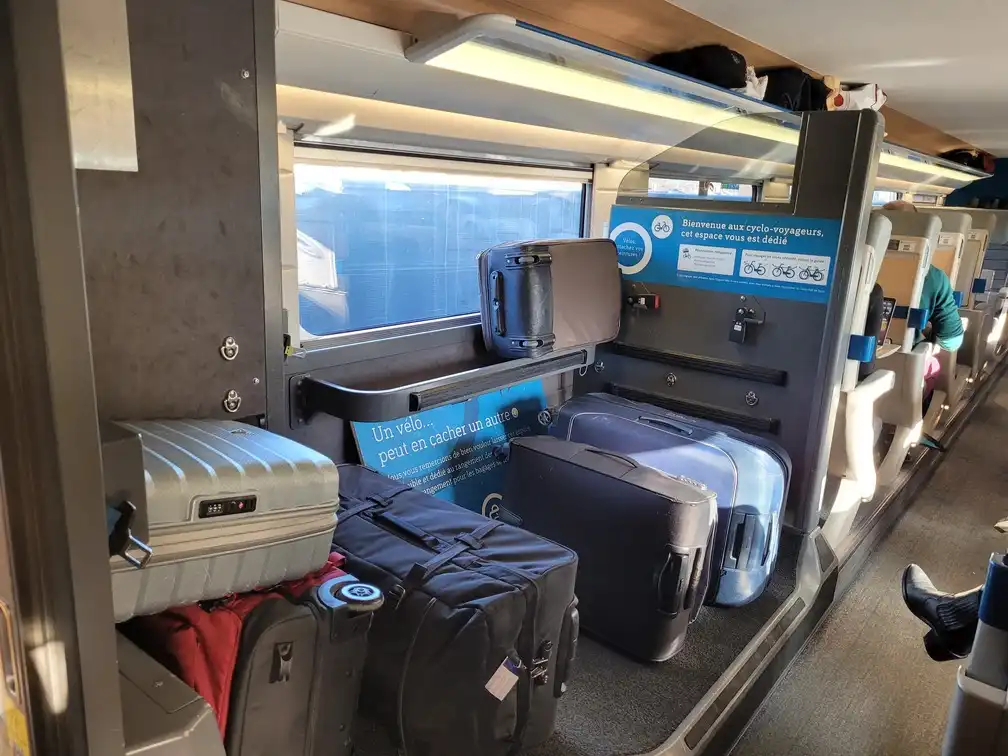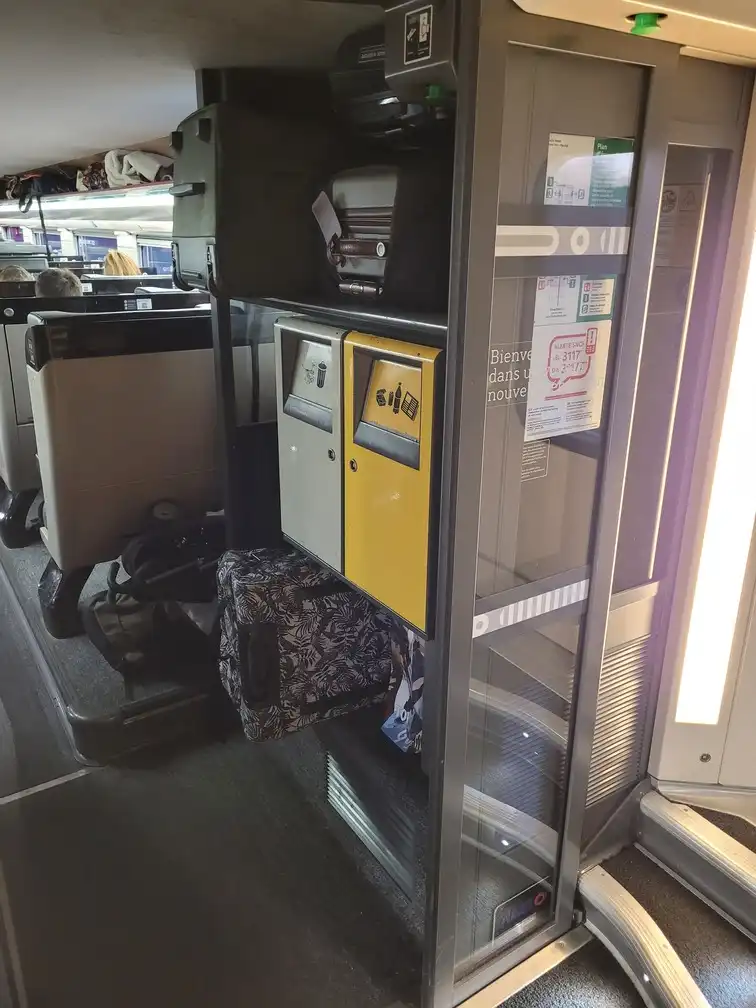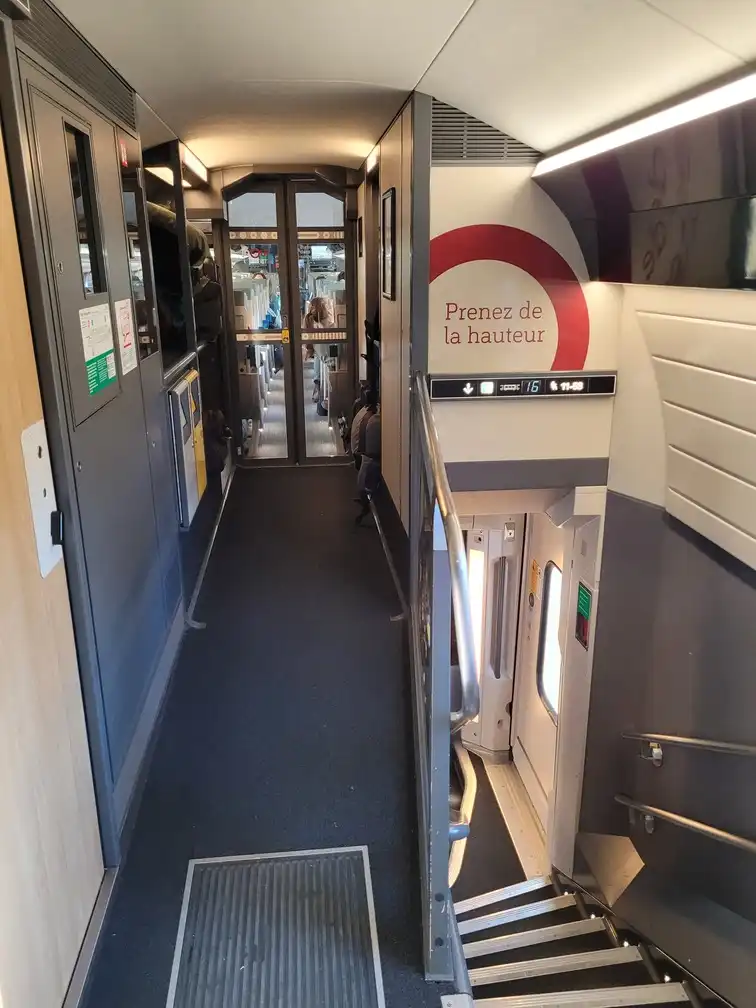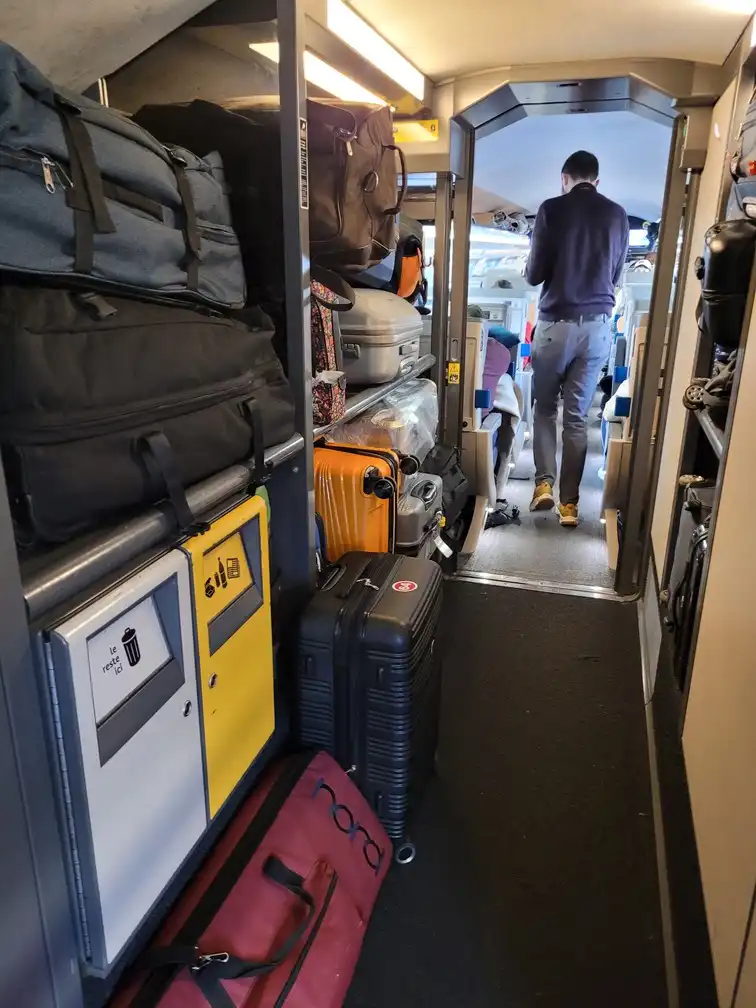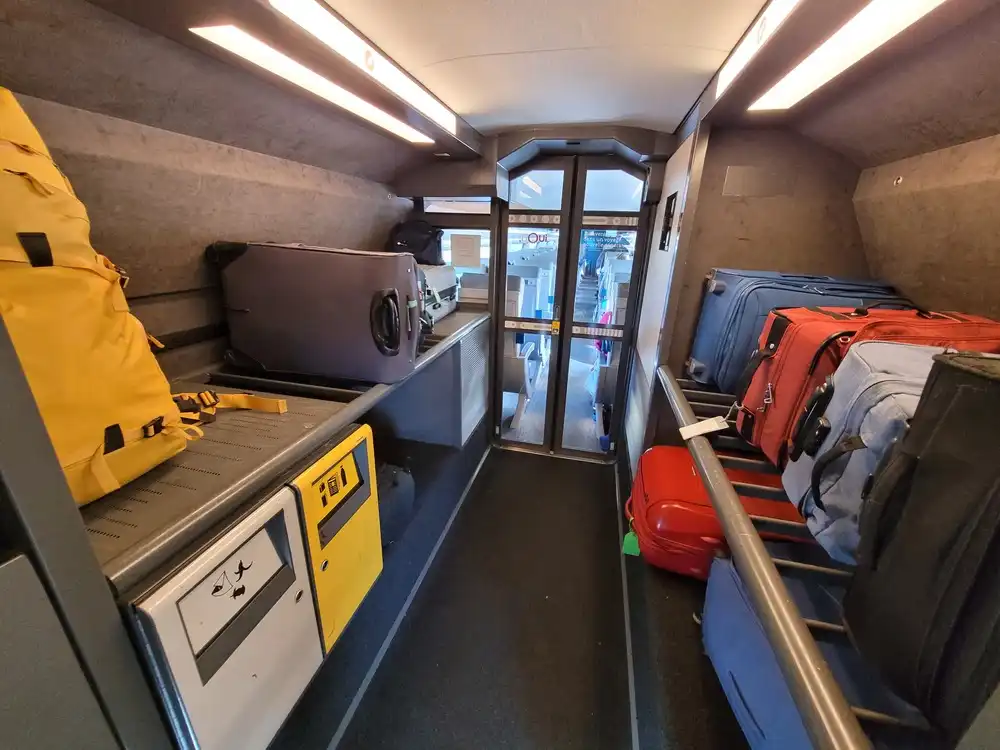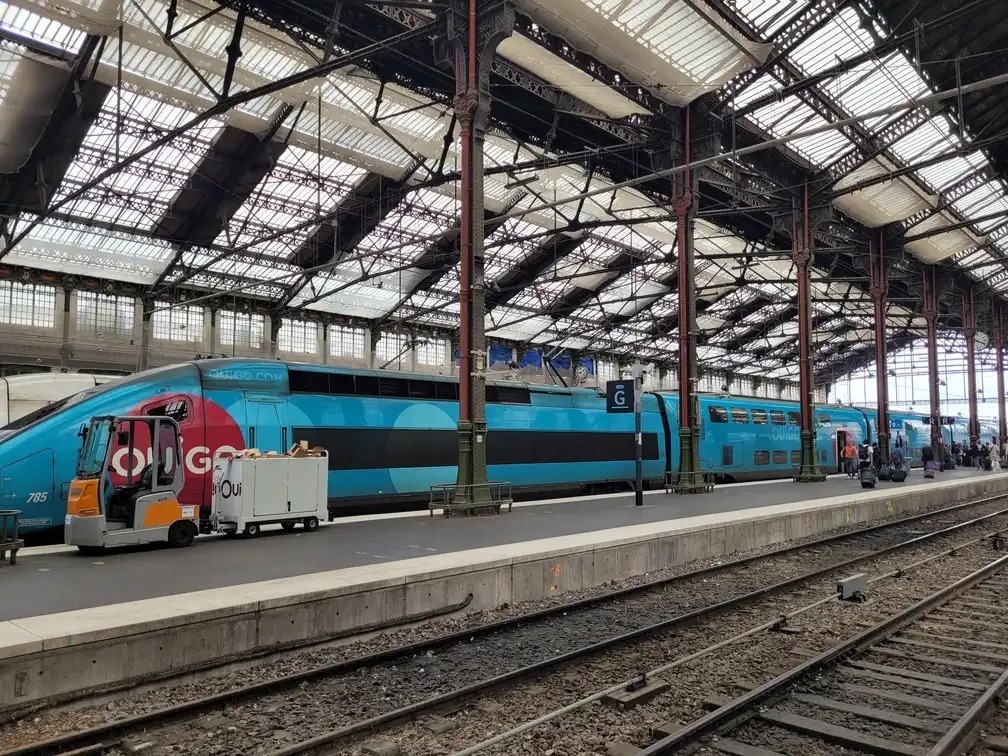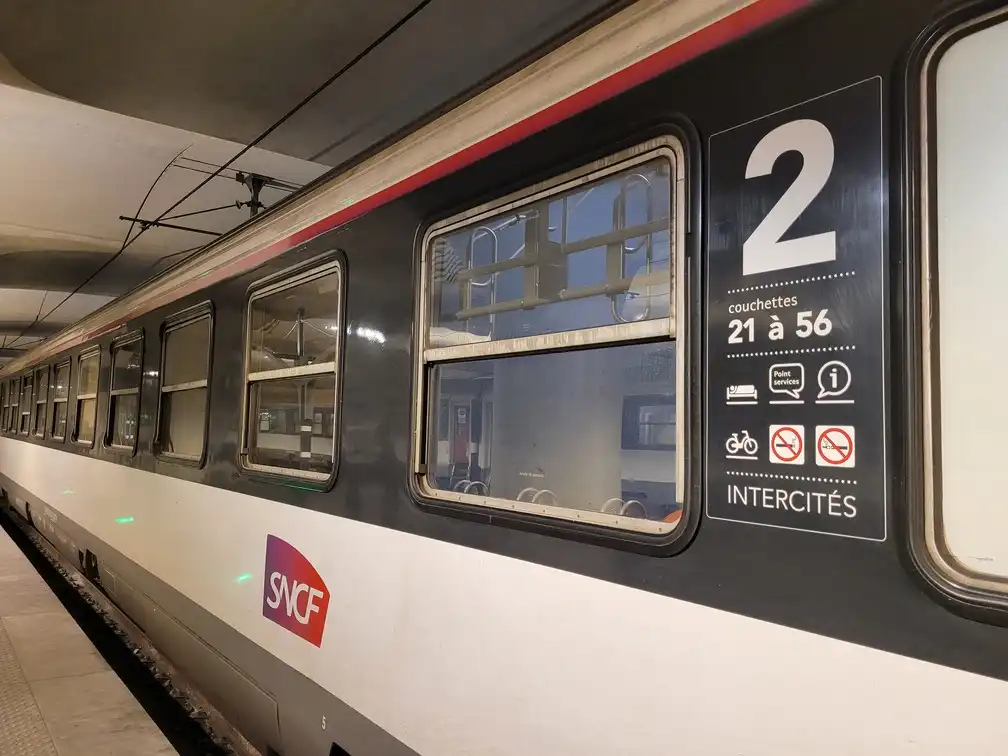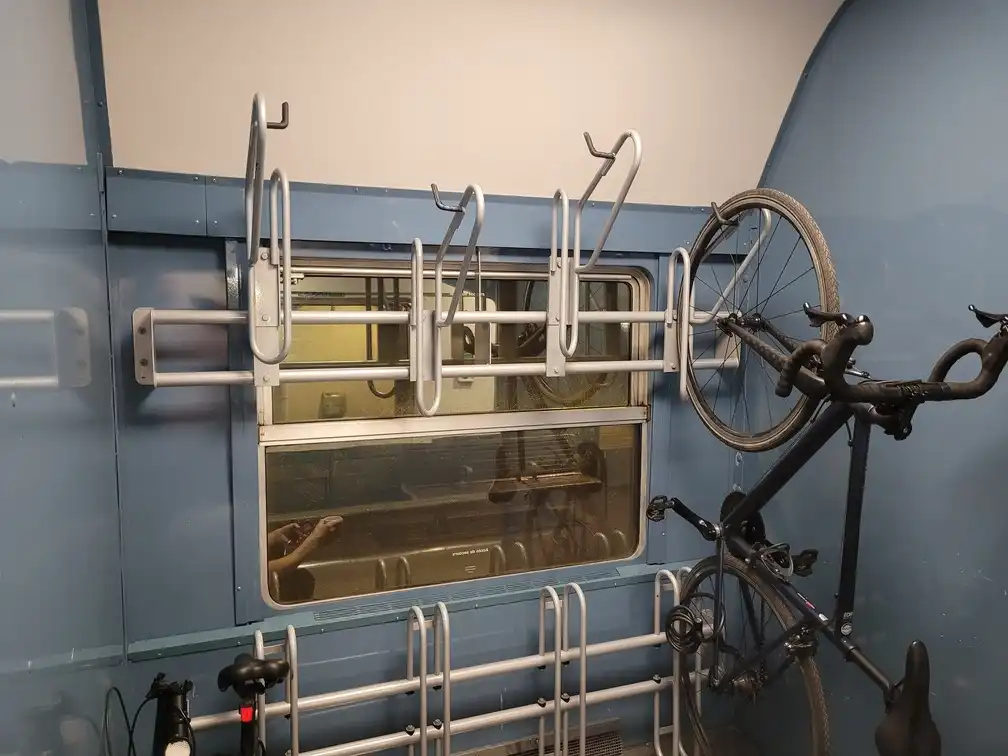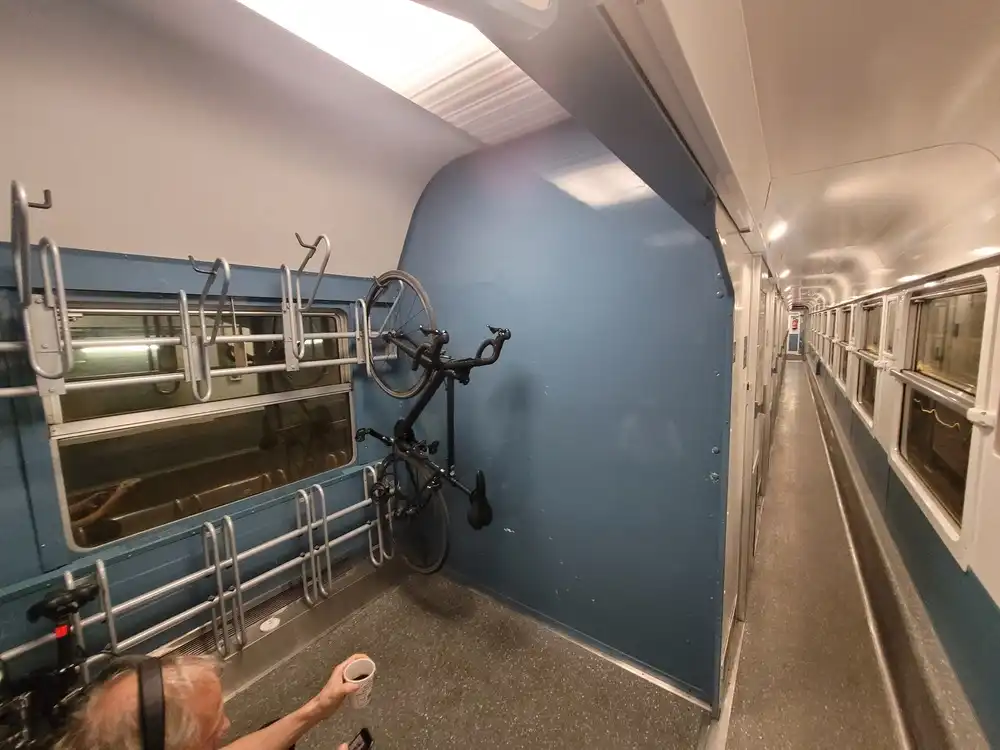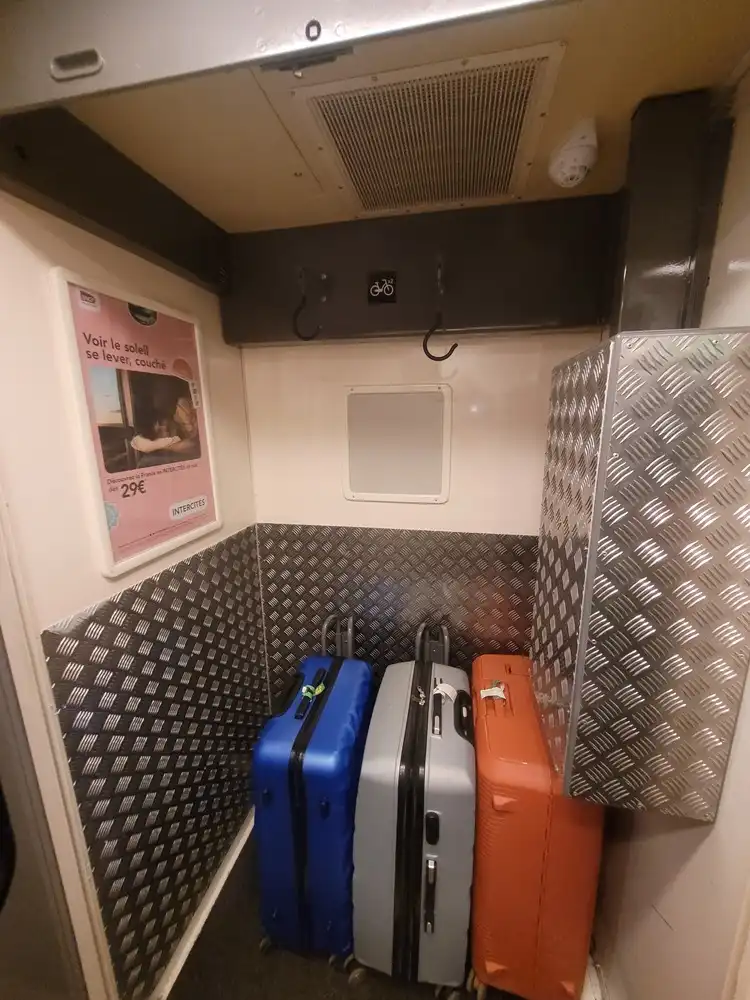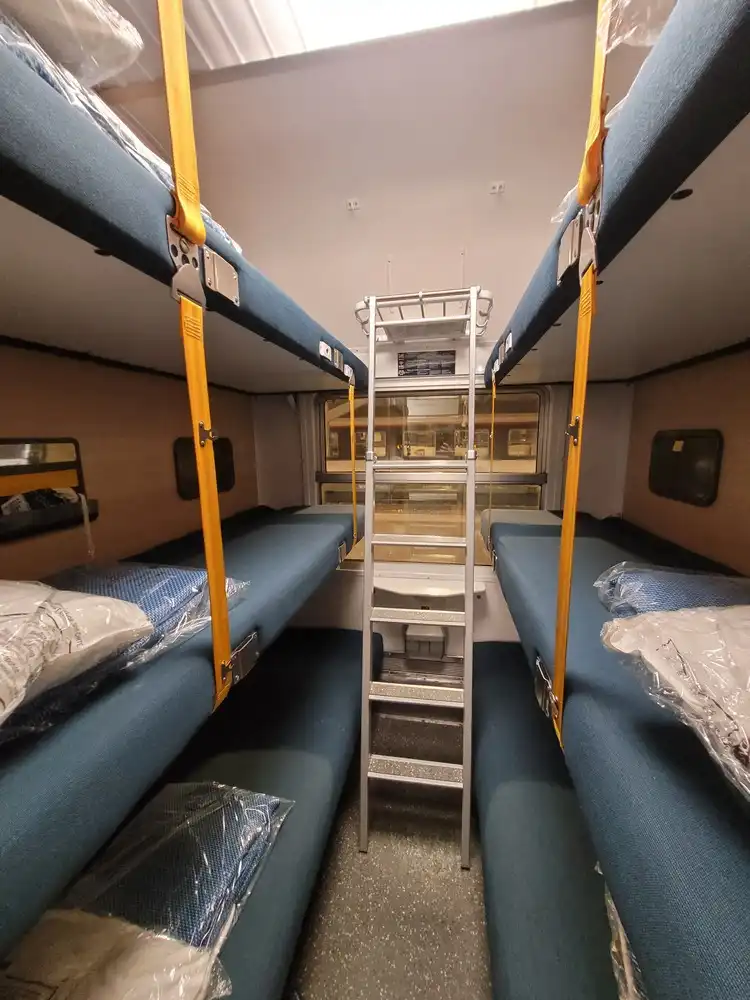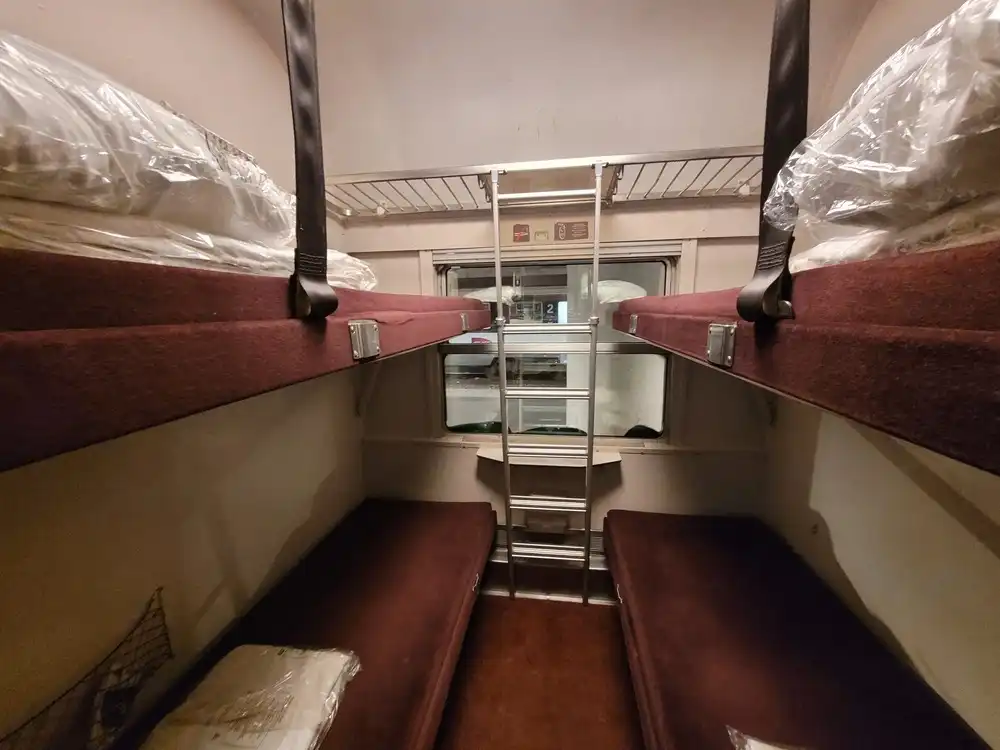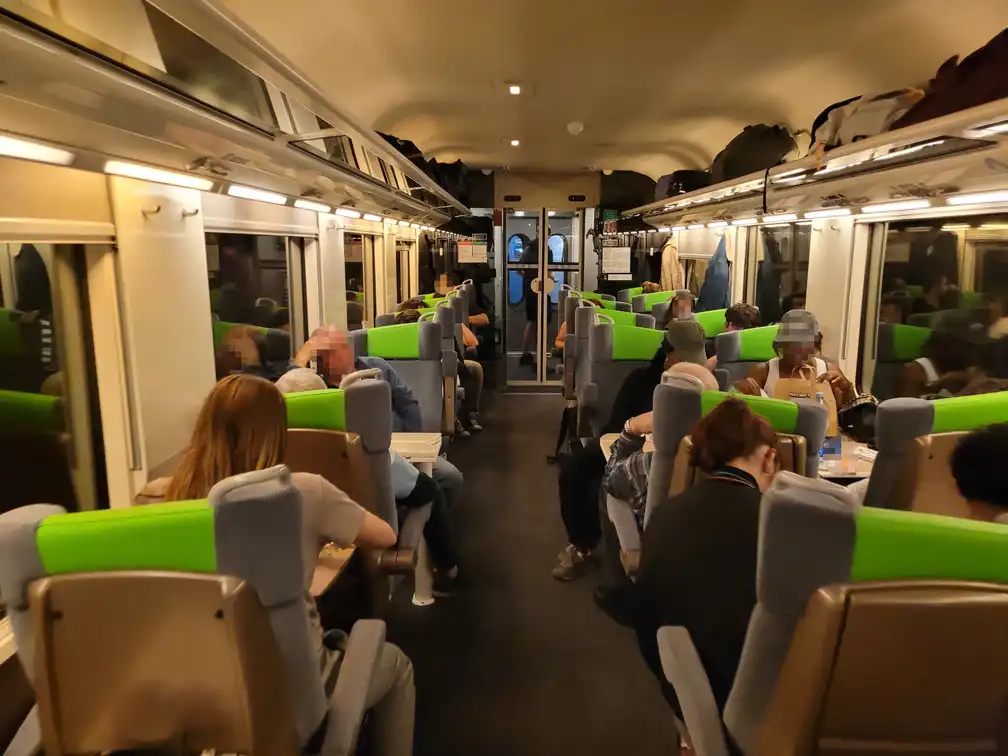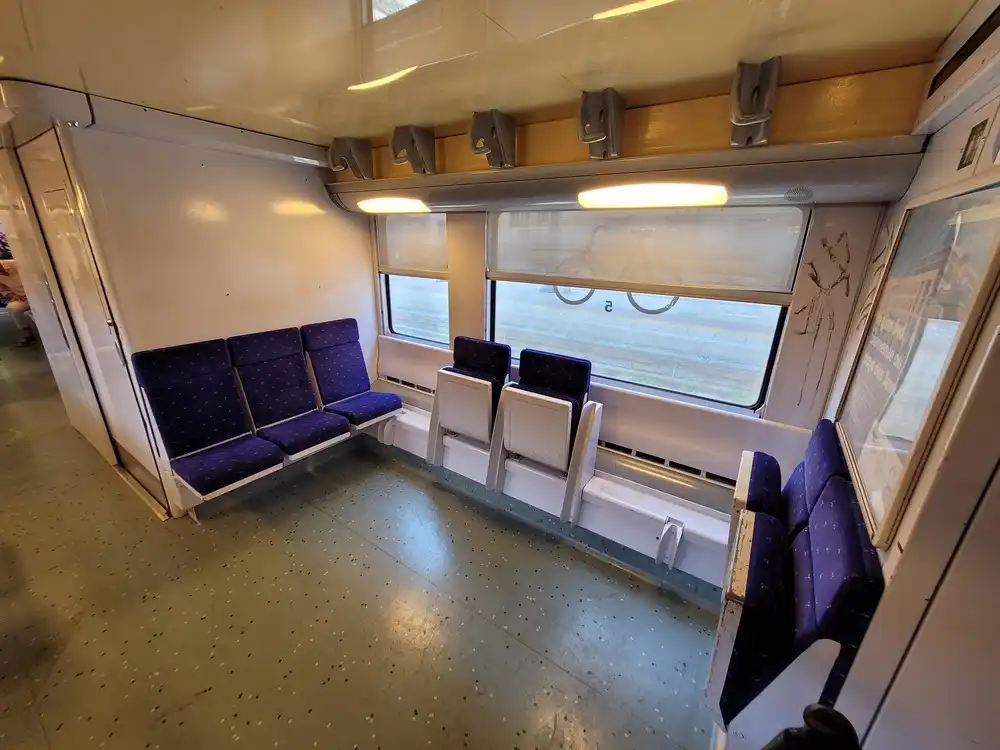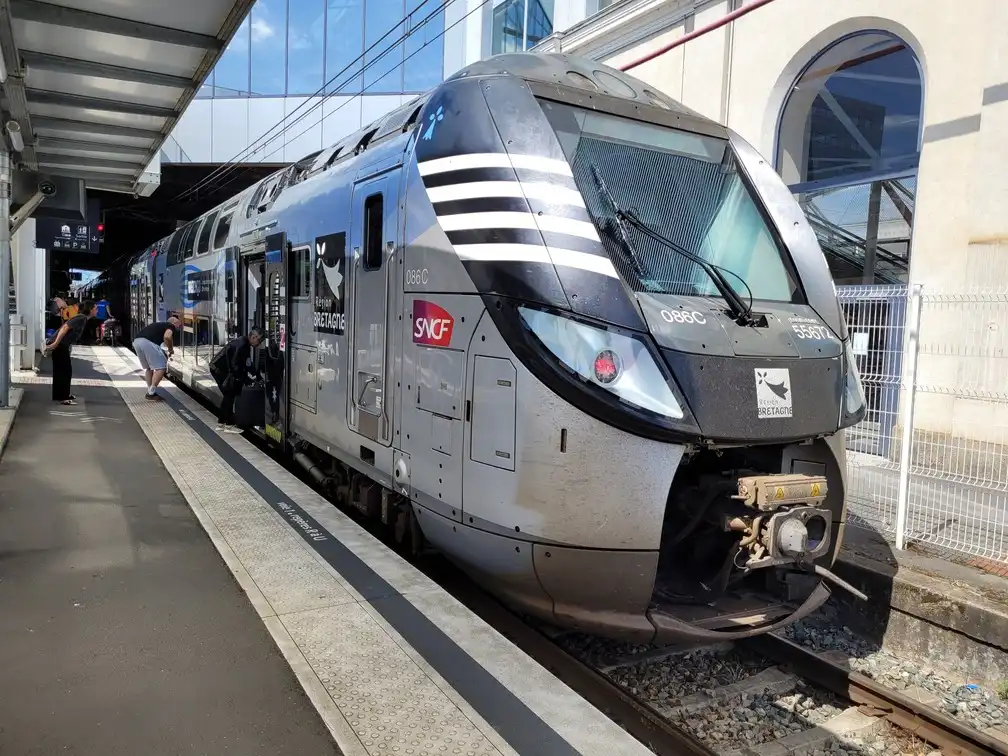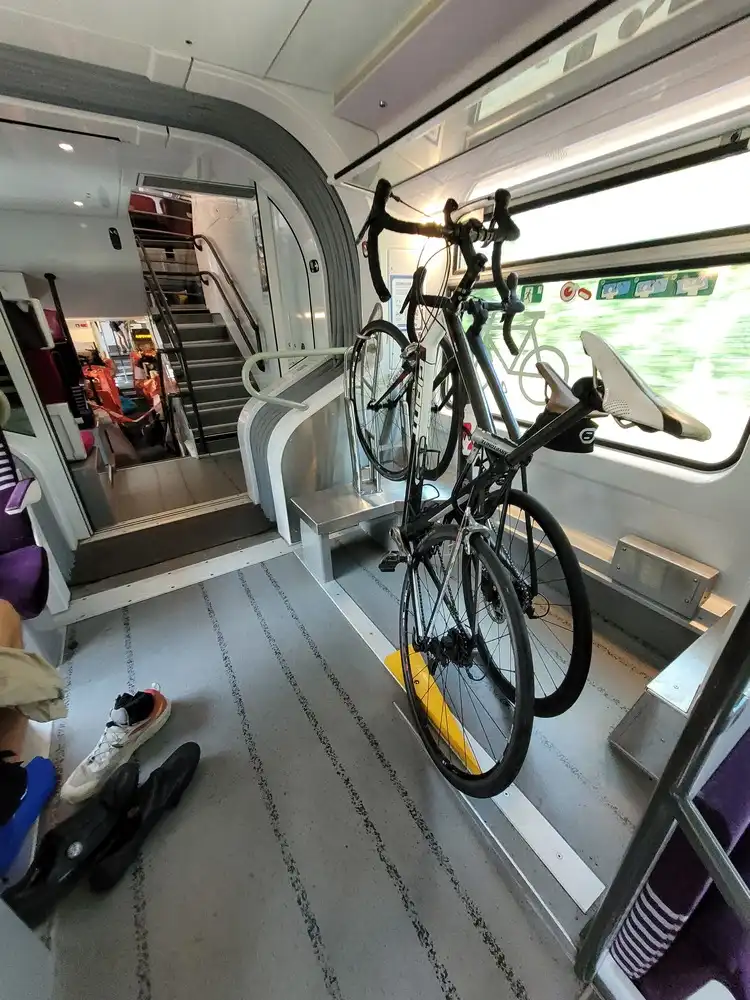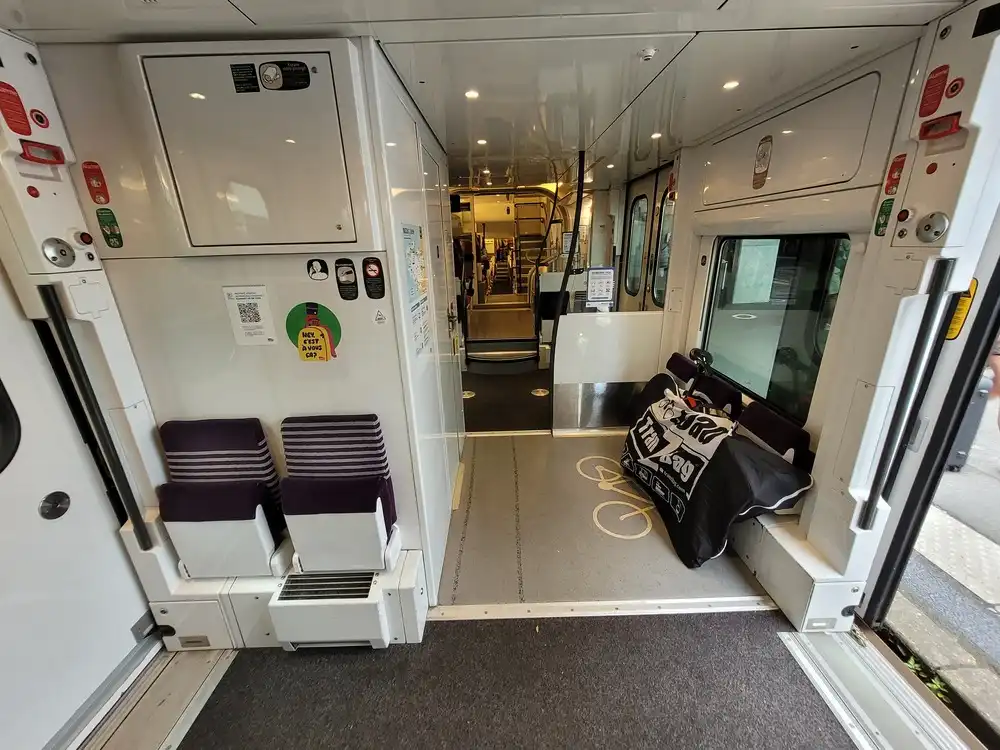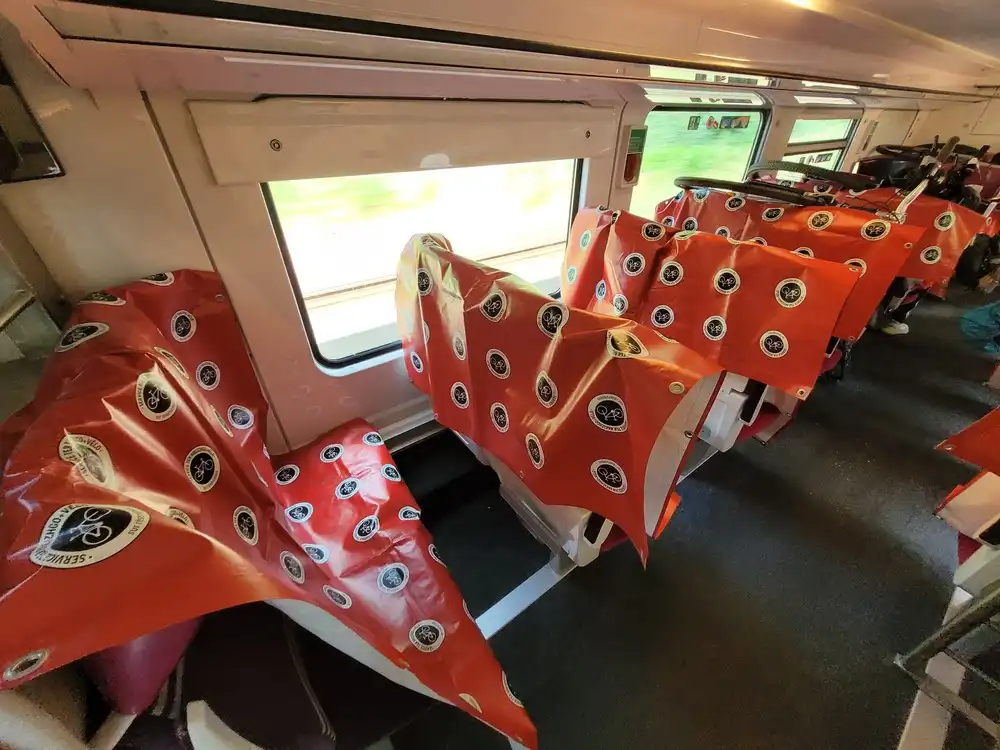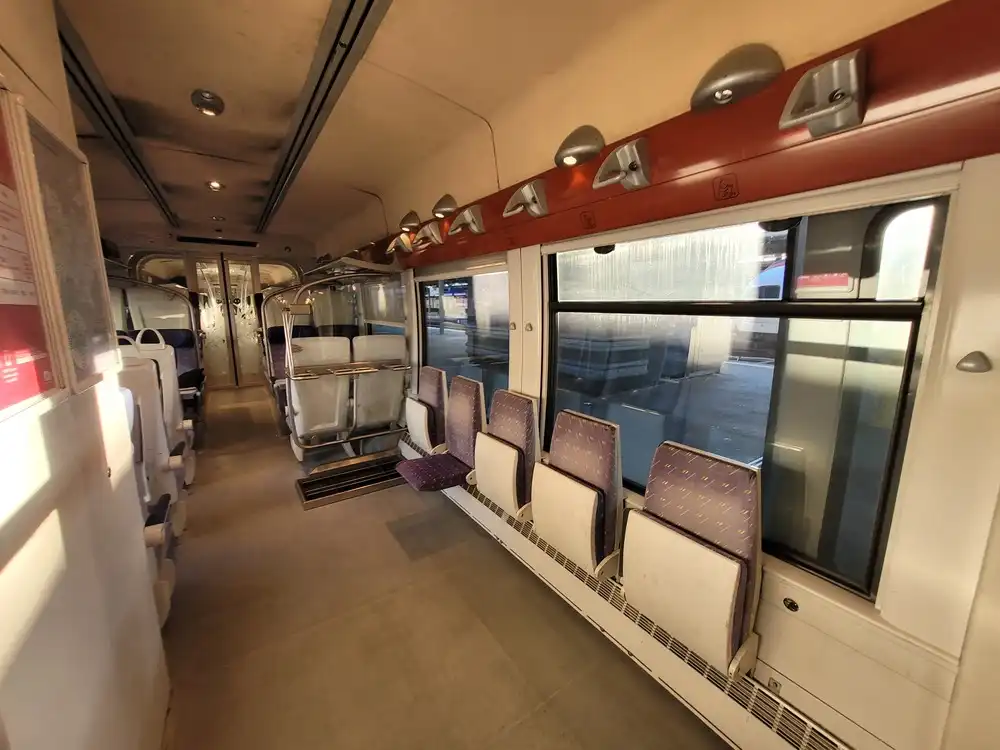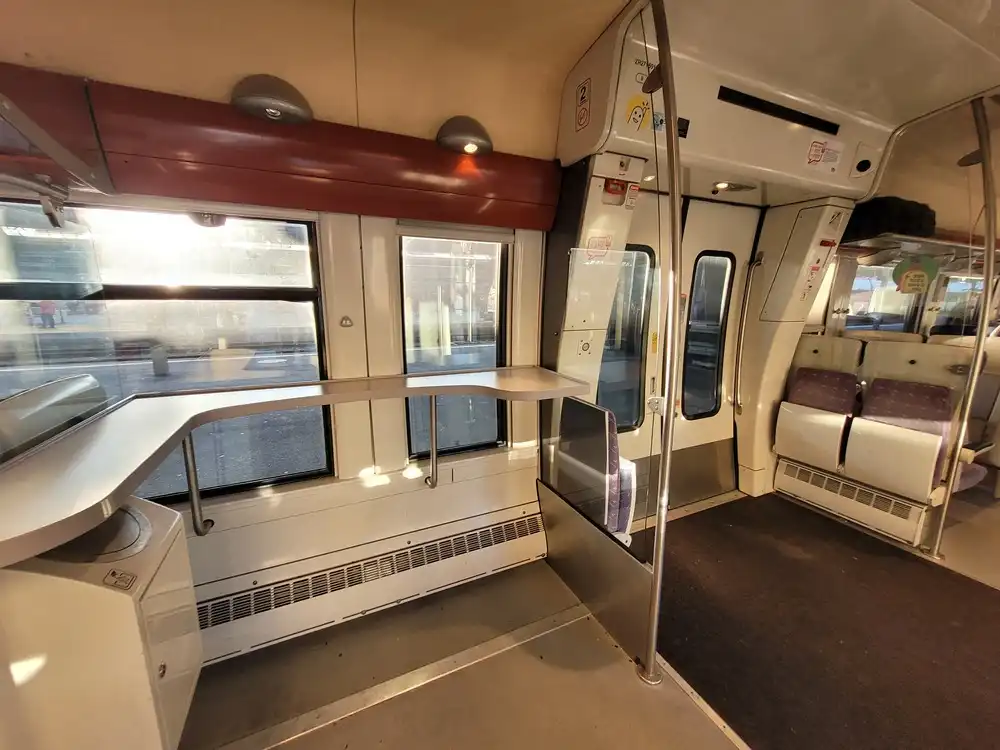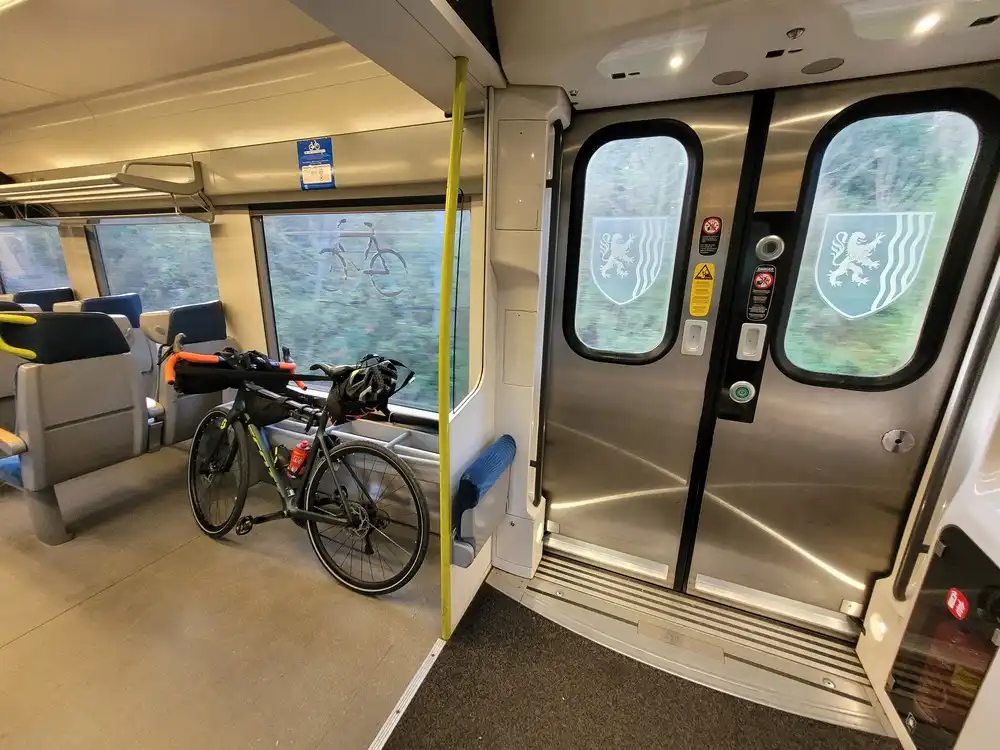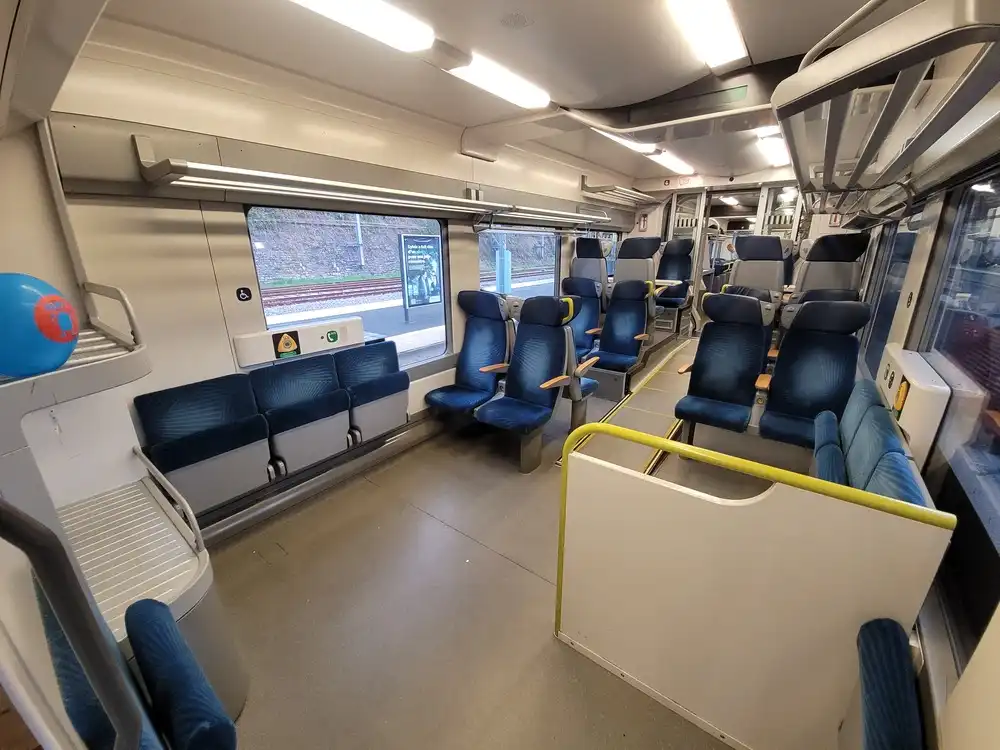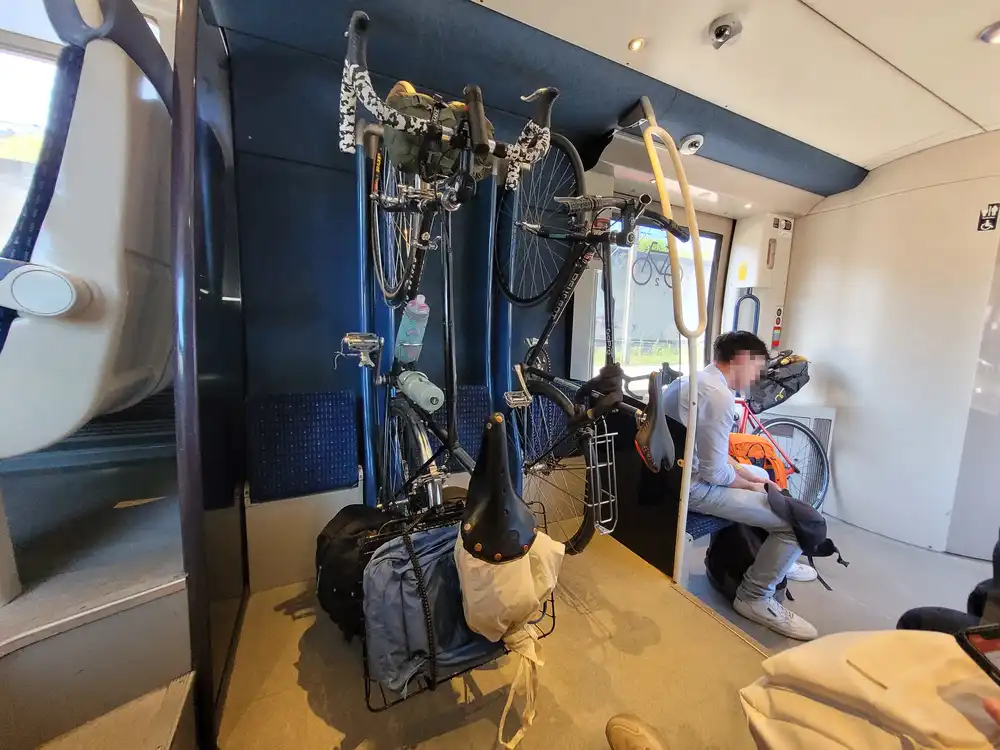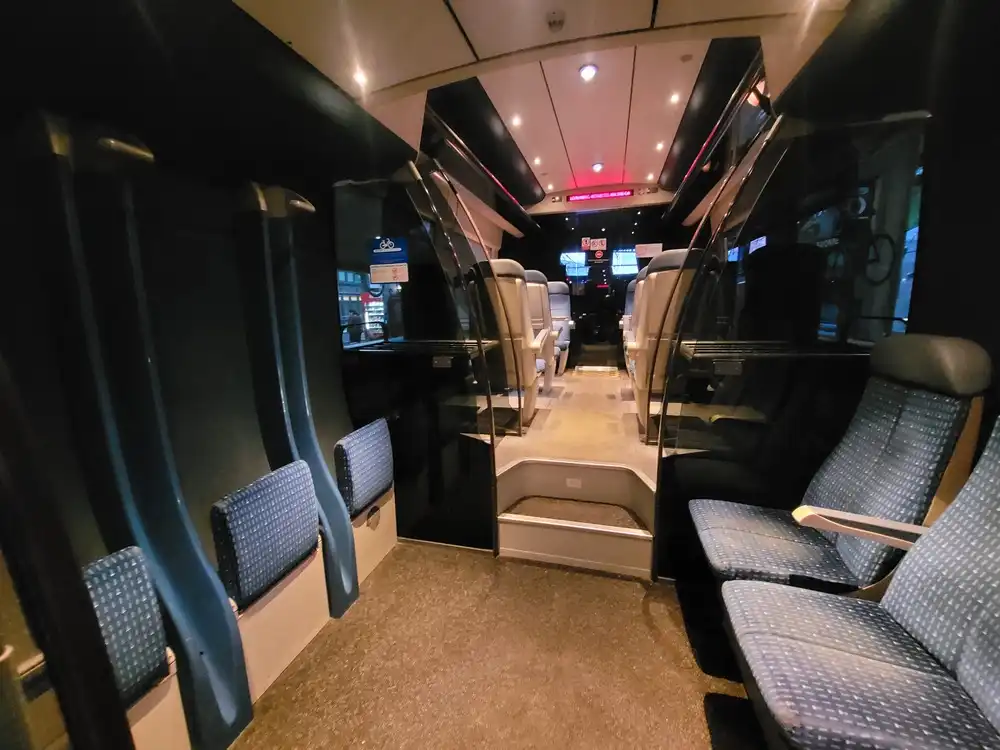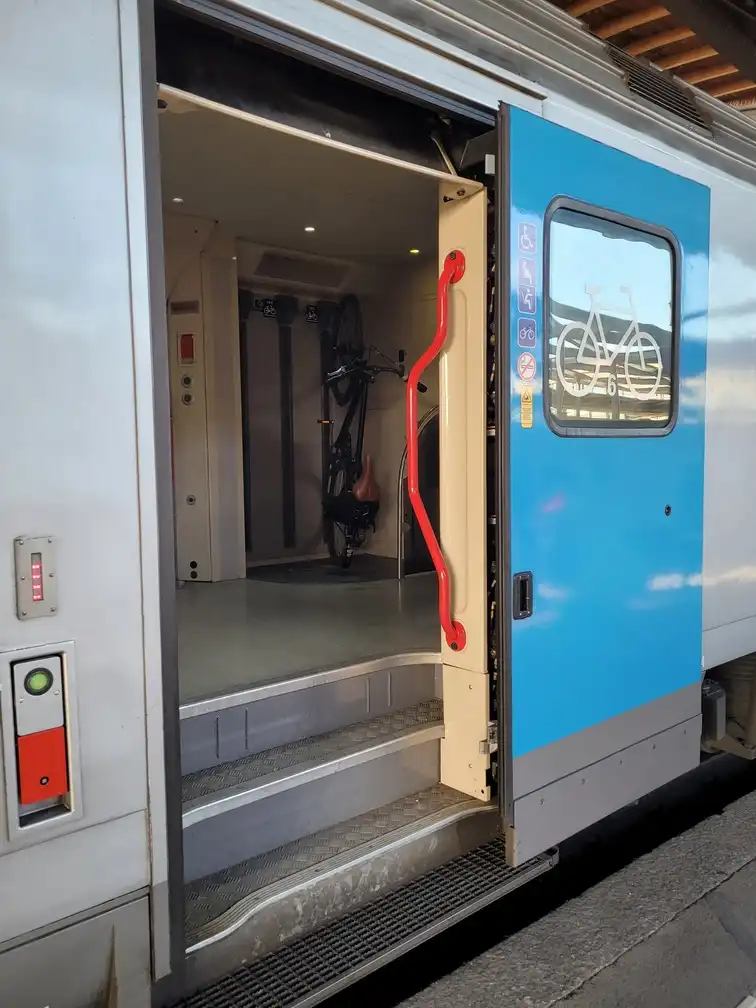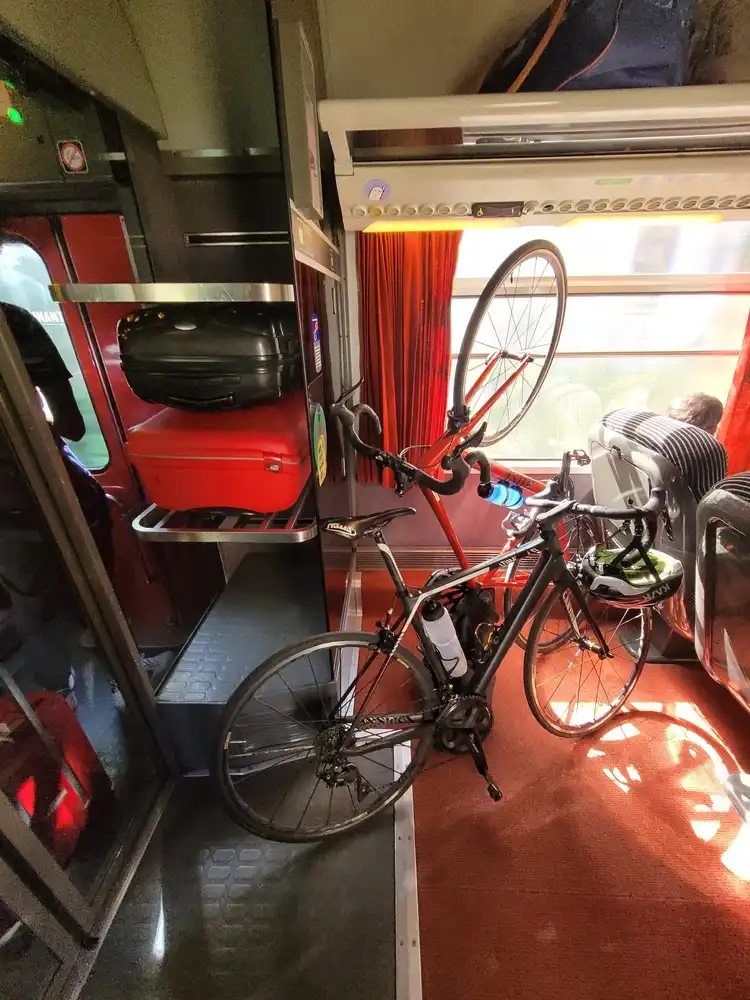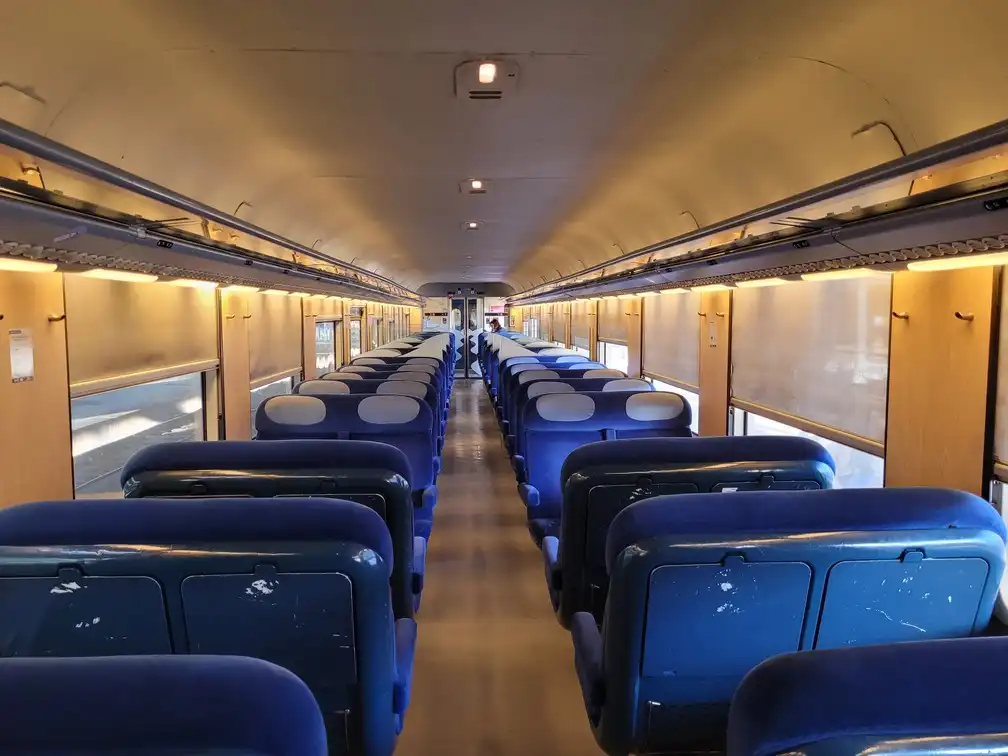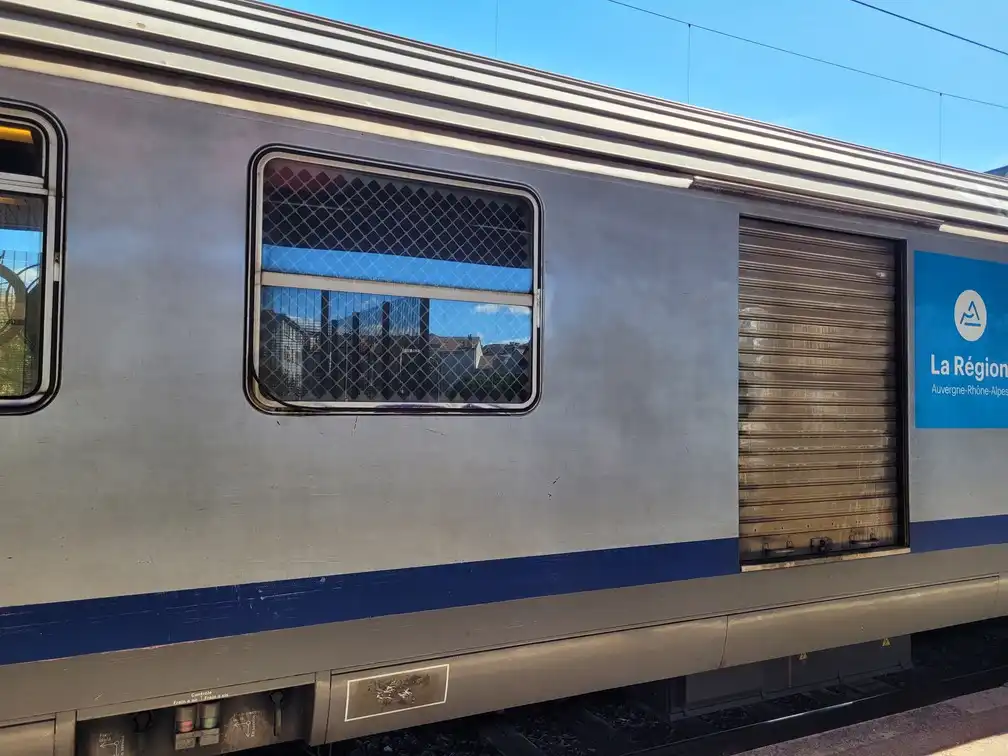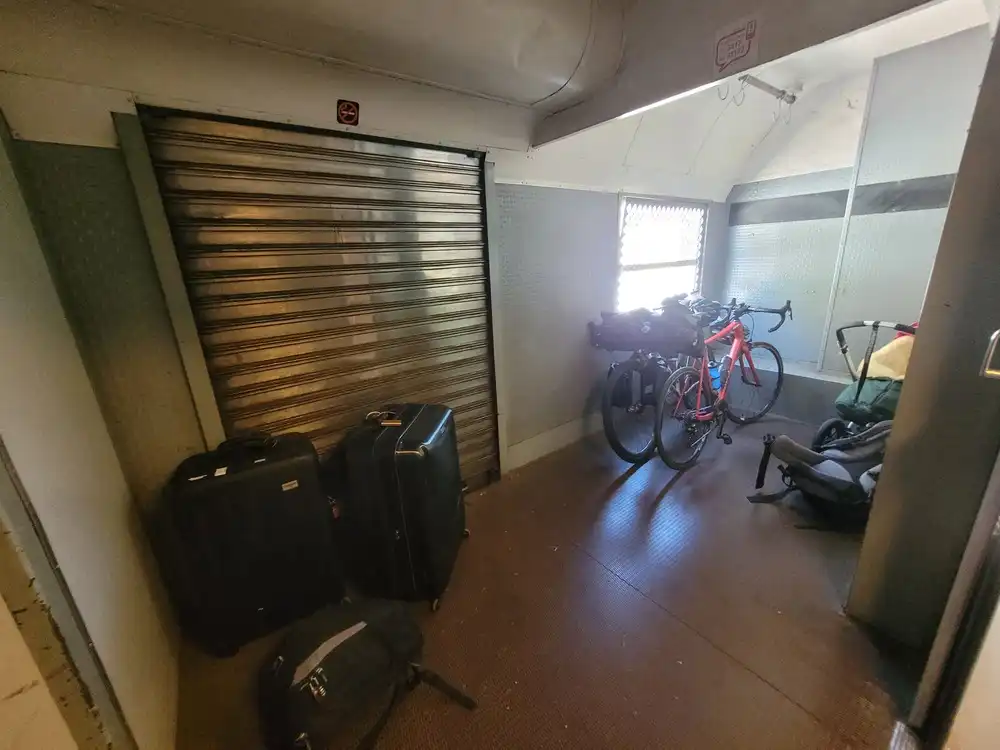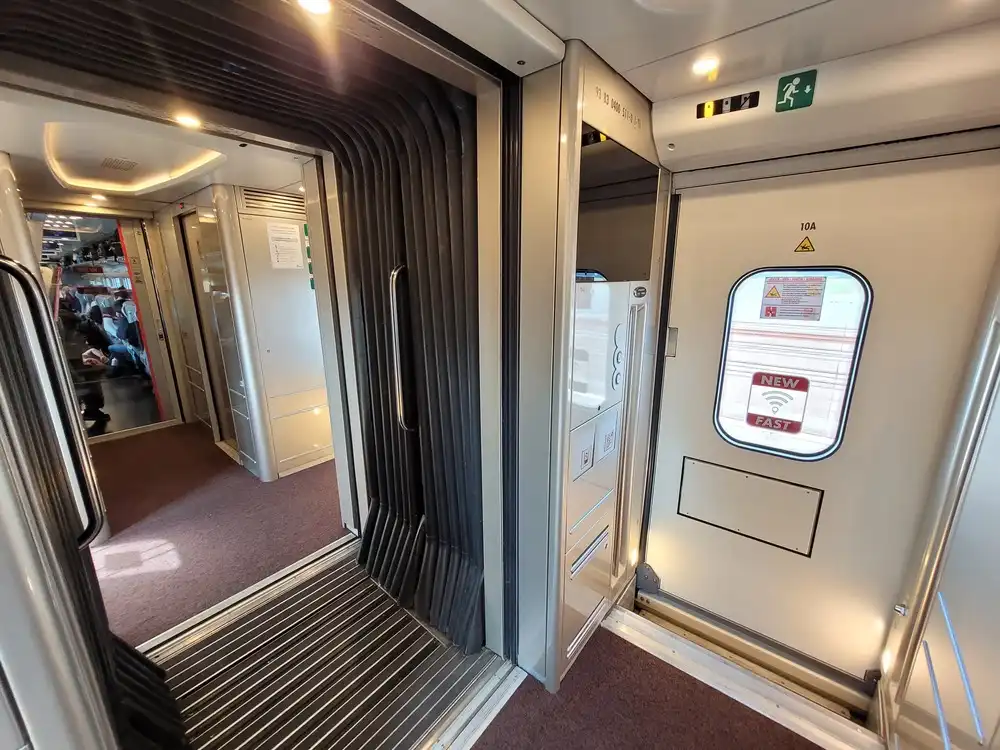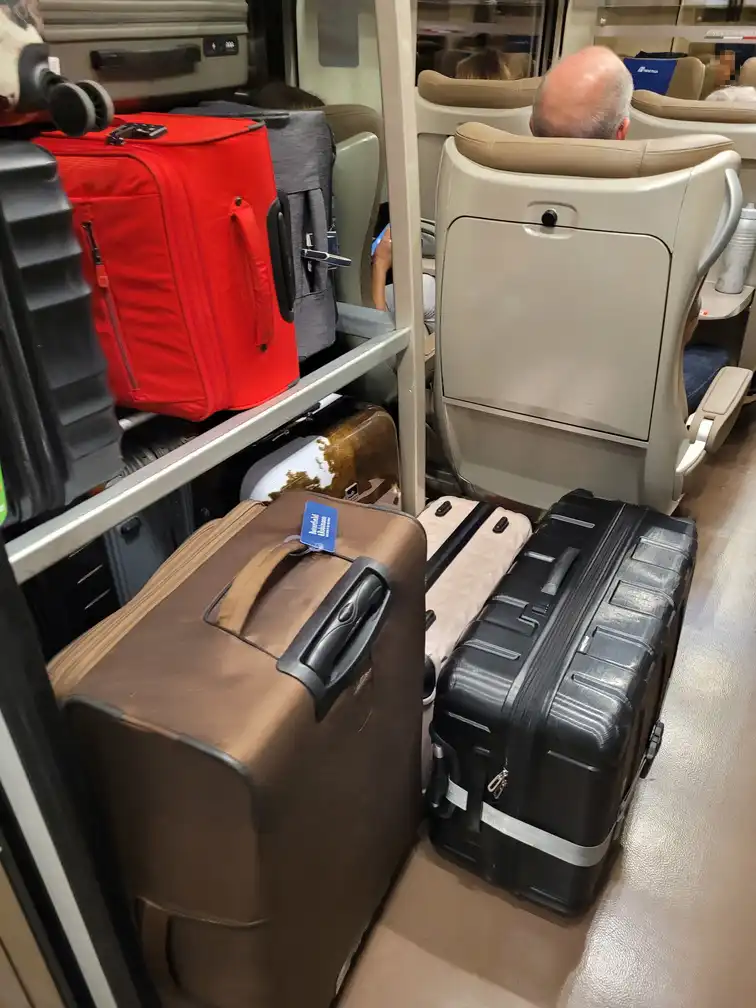A practical guide to bring your bicycle on trains in France
by
@cycling_on_rails | Strava | RSS
Located at the cross-roads of Western Europe, the country of Tour de France is certainly a good place to cycle. The largest country of the European Union by surface offers a wide variety of landscapes, from Atlantic and Mediterranean coasts to hills and mountains of various heights, not forgetting a network of canals borded by cycling paths. Whatever your cycling skills and aspirations, there is undoubtedly something for you in France, and it would be natural to come by train.
However, the railway system and main operator are generally not on par with the growing demand for multi-modal travel. Many high-speed trains still don’t offer dedicated spots for bicycles, while almost all regions have introduced some form of mandatory reservation to bring a bicycle on board regional trains, something quite rare in Europe.
My hope is that this guide will help demystify the maze of French-specific rules and restrictions, and give you a glimpse of what to expect on the ground beyond the official rules.
Policies
The main railway operator in France is SNCF, whose policies to bring a bicycle on board are summarized here. The options mainly depend on the type of train.
- Long-distance trains: Some trains offer a limited number of spots for assembled bicycles, which you must reserve for an extra 10€ fee, together with the ticket. Otherwise, you can pack the bicycle as luggage, with specific rules for each type of train (TGV, Intercités, OUIGO) but generally within a maximum size of 130x90x50 cm. In principle, that means removing both wheels - and indeed SNCF trains are usually not generous about luggage space. In practice, I’ve managed to travel with a bicycle packed in a larger front-wheel-removed configuration, but be aware that breaking the SNCF luggage rules may result in a fine of up to 150€!
- Regional trains (TER): Assembled bicycles used to be free of charge, but regions increasingly introduce mandatory reservations especially in the summer time – sometimes free, sometimes a few euros per train. Because each region has its own rules, you’ll find more information on the centralized platform Vélo à Bord. It’s unfortunately only available in French, but you can use the map or enter your origin and destination in the form. I’ve also written a brief summary below.
Don’t pay attention to the “bicycle forbidden” logo for the Île-de-France region around Paris, in reality it’s simply that you can’t reserve a spot nor need to, and that bicycles are not allowed during rush hour.
My personal advice is to pack your bicycle and transport it as luggage, especially if you’re making non-trivial journeys involving more than one train. Yes, it’s more cumbersome than rolling with your bicycle straight into the train, but SNCF made the booking process of bringing an assembled bicycle way more cumbersome. You’ll also save the bicycle fee (unless you’re travelling with OUIGO, in which case there is a fee anyway for outsized luggage).
Alternatively, perhaps more as an anecdote than a practical service given the price, SNCF offers a luggage delivery service, where bicycles can be shipped within France for a whooping base price of… 209€ (plus your train ticket). Be careful though: there is a surcharge if you live upstairs or want to ship to an island (even when the island is connected by a bridge).
Other operators
The island of Corsica has its own railway network independent from SNCF. Bicycles are only allowed when packed within 120x90 cm, for a 15€ additional fee.
You’ll also find a few other train operators in the long-distance segment: Eurostar, Renfe, Trenitalia, etc. As these are usually related to cross-border services, I’ve put the details in the international section.
Train schedule and ticketing
The official website to buy SNCF tickets is SNCF Connect and the corresponding apps (Android, iPhone). However, you may find it bloated or unintuitive, so be aware of third-party1 resellers such as 1.2.Train, Rail Europe or Trainline, or any other travel agency listed on SNCF Voyageurs’ website.
Here is an overview of the SNCF Connect app experience. After entering your destination and origin in the main search bar, you’ll get the option to edit passengers.
Clicking on the bicycle button will give you the option to add an assembled bicycle.
This option should only be useful for TGVs, Intercités and night trains. Worse, it will generally exclude all other types of trains from the search!
- Indeed, OUIGO trains have no spots for assembled bicycles, yet allow packed bicycles for a fee. However, adding a packed bicycle happens after you’ve chosen your train. See below.
- Regional trains should all have bicycle spots, but either don’t require reservations or the reservation happens on a dedicated website… so of course SNCF Connect won’t show them if you search with the bicycle.
Don’t try to find the logic in that.
Unfortunately, the app insists that the number of passengers must be equal to the number of bicycles, so if some people in your group don’t have bicycles you’ll have to split the search into independent tickets.
Likewise, if you’re booking a round-trip, the app insists that you must have your bicycle with you on all journeys. So if you want to move your bicycle from one city to another and come back alone you’ll have to split the trip into two separate tickets. Which is unfortunate because some discount cards such as Carte Avantage only give you a discount when you book a round trip (over a week-end). In that case it may be cheaper to book a round-trip anyway and “waste” the bicycle spot on the return leg.
After that, the search results are filtered to show you only the trains with enough bicycle spots available, or an error if no trains have bicycle spots that day. Note that for TGVs it may be as little as 2 spots per train (for the trains that have bicycle spots at all), so if you have more bicycles in your group consider splitting your search or transporting them as luggage.
Completing the purchase should then be straightforward (don’t forget to make sure the bundled insurance and other extras are disabled).
You’ll often be able to put an option for your ticket, meaning you’ll typically have up to one week to confirm the purchase. This can be helpful if you had to split your search to cope with the flaws of SNCF Connect (e.g. between TGVs and TERs or between passengers with and without bicycles) and want to confirm that all the legs are available.
The experience should be similar for other “premium” long-distance trains with mandatory reservation, i.e. Intercités and night trains (“Intercités de nuit”). As I warned you above, if you want to book a OUIGO or a TER with a bicycle, you’ll have to remove the bicycle from the search. This will show additional trains, on which you can bring your bicycle as packed luggage.
If you select a OUIGO train, you’ll have to add your packed bicycle in the luggage dialog after confirming the fare.
This will remind you of the maximum dimensions and of the 5€ fee.
After all these hurdles, congratulations, you’ve successfully booked a ticket with a bicycle… unless you’re using any regional train! In that case, you’ll have to follow the special procedure explained just below – unless the bicycle is packed as luggage.
At this point you may wonder: are any of the third-party ticket resellers more intuitive? The main advantage of 1.2.Train is that the design is minimalistic and it’s therefore very fast to book tickets, but it’s only available in French. The main advantage of Rail Europe is that you can book Interrail reservations on French high-speed trains (which you cannot do at all on SNCF Connect) without any additional booking fee. The main advantage of Trainline is being able to compare prices with other operators such as Trenitalia.
Unfortunately, none of these resellers let you book a spot for an assembled bicycle on long-distance trains. This also means that if you use an Interrail pass and want to bring an assembled bicycle in a long-distance train, then your only option (as far as I know) is to use a physical ticket machine (or a ticket counter if you find one). As usual, contact me if you know of a way to do it online!
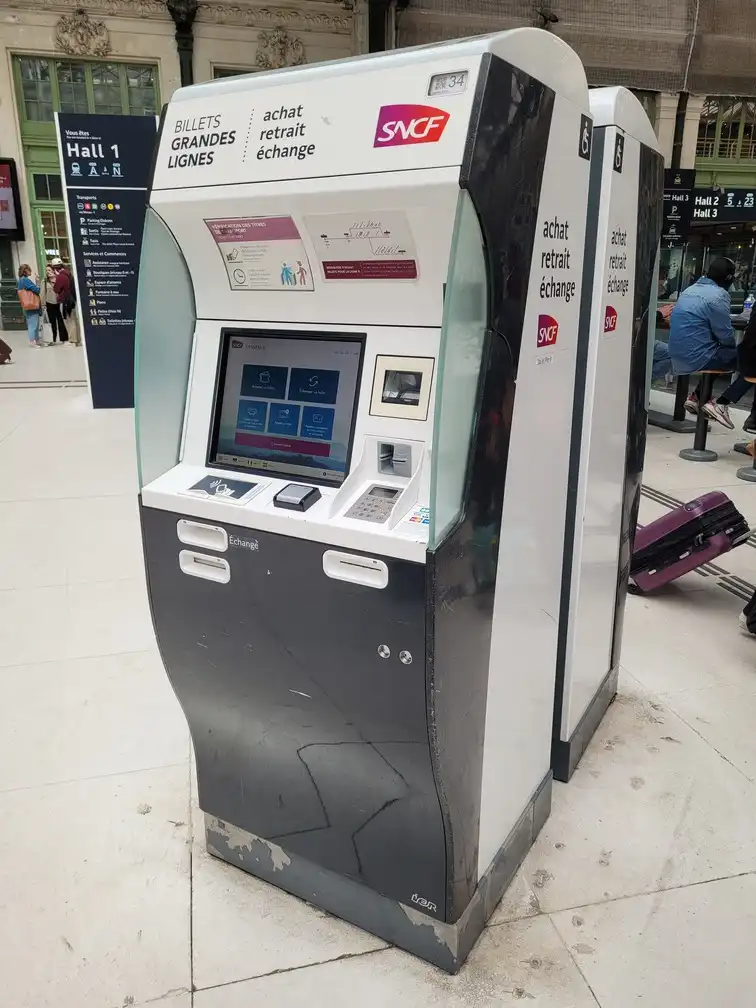 SNCF ticket machine for long-distance trains. Yes, there are different machines for regional trains.
SNCF ticket machine for long-distance trains. Yes, there are different machines for regional trains.
Regional trains (TER)
In regional trains, reserving a bicycle spot is usually mandatory (and possible) in summer and/or on week-ends, but each region has its own rules, see below for a summary. These bicycle reservations are usually* booked separately from your regular train tickets, which means that you need to remember them. One upside of this system is that you can actually book these bicycle spots online if you’re using an Interrail pass.
*Except of course for the exceptions – mostly TERs to/from Paris – for which the bicycle spot is reserved together with your regular ticket.
The centralized platform Vélo à Bord will redirect you to the various regional reservation platforms.
You can use the map to search if you already know the region, or use the built-in search for your journey. Unfortunately it’s only available in French, but should work as expected: enter your origin, destination, date and time.
The search results will show you a list of trains with the number of bicycle spots available. Amazingly, the search also works for routes that involve a few connections – however in that case you’ll have to reserve a spot on each train separately. Beware of the red “complet” label, which means “sold out”: in that case pick another train or transport your bicycle as luggage.
In the next step, you can add bicycles to your basket. Each region has its own rules: the reservation fee may be 0€, 1€ or 3€ (per train), some regions allow e-bikes or trailers.
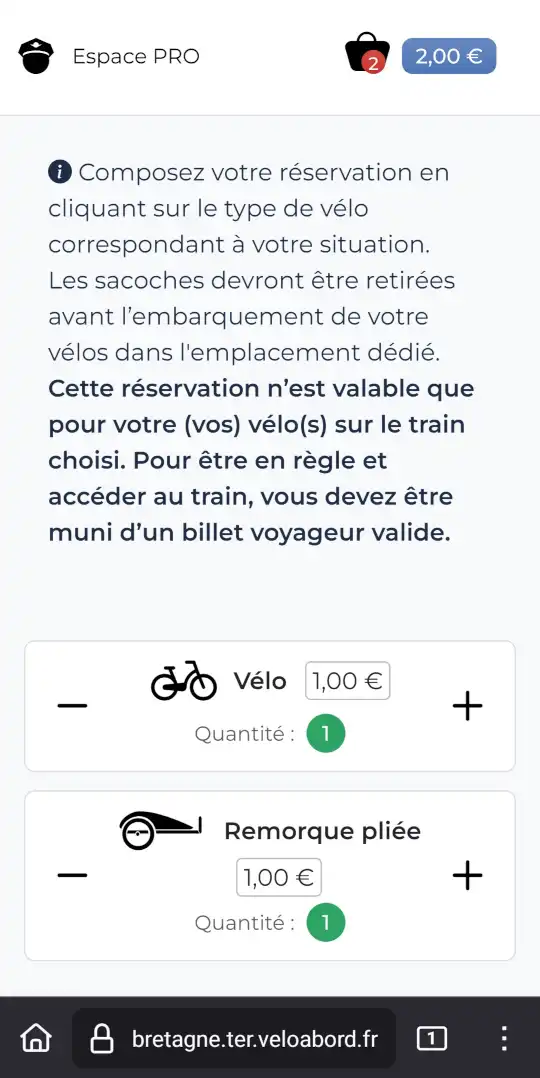 Region Bretagne: 1€ per item, regular bicycle and/or folded trailer.
Region Bretagne: 1€ per item, regular bicycle and/or folded trailer.
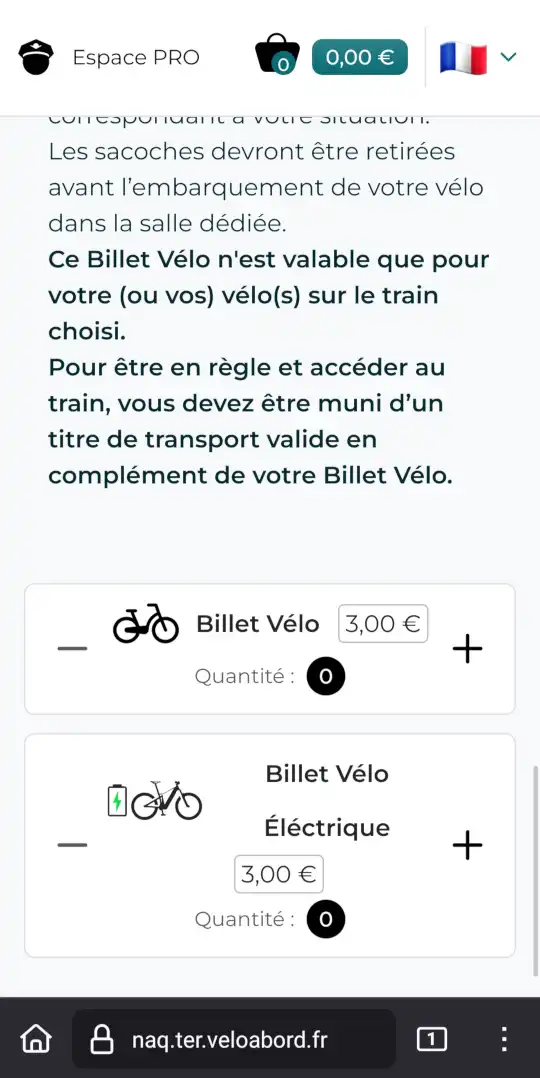 Region Nouvelle Aquitaine: 3€ per item, regular bicycle or e-bike.
Region Nouvelle Aquitaine: 3€ per item, regular bicycle or e-bike.
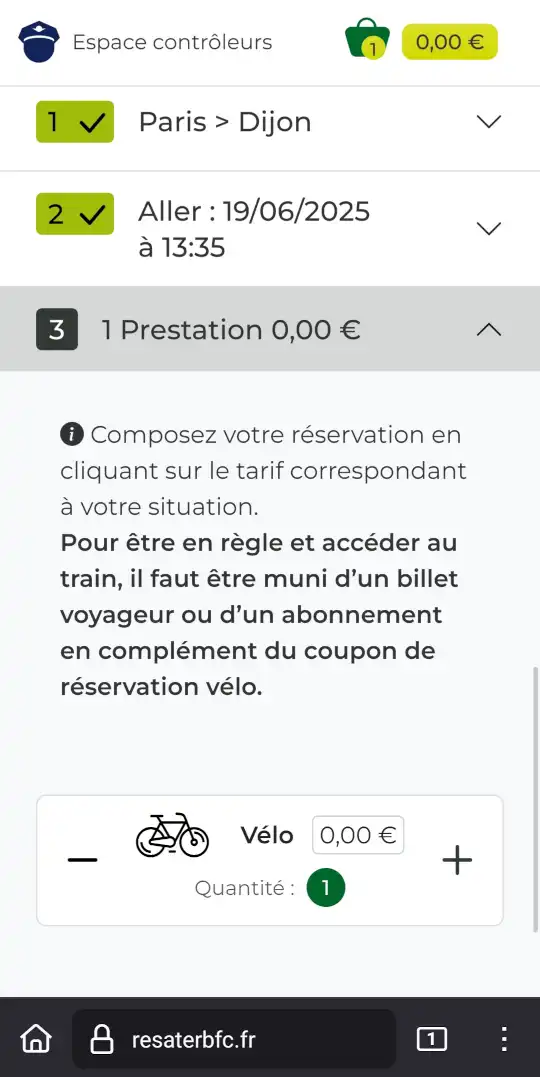 Region Bourgogne-Franche-Comté: regular bicycles, free of charge.
Region Bourgogne-Franche-Comté: regular bicycles, free of charge.
Lastly, you’ll have to fill in a form with your identity details. Don’t forget to check “non” for the last question, unless you want your data to be used for marketing and other nefarious purposes.
As of 2025, a summary of the rules for TERs is the following. As you can see, the regions have been very creative in inventing their own rules! A situation condemned by the “Mon Vélo Dans le Train” collective in their 2025 white paper (French).
This is a brief summary. As you can see the rules are numerous, complex and subject to change, please always refer to the official websites for up-to-date information.
- Auvergne-Rhône-Alpes: Mandatory reservation of 1€ from May to September on some main lines, usually only on week-ends and public holidays. Booked separately from your train ticket.
- Bourgogne Franche-Comté “Mobigo”: Mandatory reservation (free of charge) on the main lines connecting to Paris. Booked separately from your train ticket.
- Bretagne “Breizh Go”: Mandatory reservation of 1€ on all lines from May to September. Booked separately from your train ticket.
- Centre Val de Loire “Rémi”: Mandatory reservation of 1€ in various cases: on week-ends and public holidays for mainline services, every day from May for the most touristic lines, etc. Booked separately from your train ticket.
- Grand Est: Reservation is only mandatory for the Paris - Troyes - Mulhouse and Paris - Châlons en Champagne - Strasbourg services. It costs 3€ per bicycle and must be purchased together with your ticket. Supposedly bicycles are forbidden on some Strasbourg - Basel services at rush hour, although there are dedicated spots and I’ve seen bicycles there. In any case, packed bicycles are allowed on these rush hour services.
- Hauts-de-France: No reservation possible nor needed, first come first served.
- Île-de-France “Transilien”: No reservation possible nor needed, first come first served. Assembled bicycles aren’t allowed at peak hours (6:30-9:30 and 16:30-19:30 on Mondays to Fridays).
- Normandie “Nomad”: Mandatory reservation (free of charge) on lines to Paris, and here for the Caen - Le Mans - Tours and Caen - Rennes lines from May to August. The bicycle spot is booked together with your ticket for trains to Paris, and separately for the lines to Tours and Rennes.
- Nouvelle Aquitaine: Mandatory reservation of 3€ from May to September on 6 lines (La Rochelle - Bordeaux, Angoulême - Royan, Libourne - Arcachon, Le Verdon - Pessac, Bordeaux - Hendaye, Bordeaux - Tarbes). Booked separately from your train ticket.
- Occitanie “Lio”: Mandatory reservation (free of charge) on all lines on week-ends from May and every day in July-August. Booked separately from your train ticket.
- Pays de la Loire “Aléop”: Mandatory reservation of 1€ from May to September, free of charge for users with a subscription. Booked separately from your train ticket.
- Sud-PACA “Zou”: Mandatory reservation of 1€ from May to September on a few lines: Marseille-Lyon (every day), Briançon - Valence, Gap - Grenoble (week-ends and public holidays), Marseille - Briançon (7-9 June only). Booked separately from your train ticket.
Starting from 29 June 2025, the new operator Transdev will replace SNCF on the Marseille-Nice line in region Sud-PACA. However, this should be a seamless change, as assembled bicycles will still be allowed on board without reservation, and tickets will still be available on SNCF Connect and other channels.
Getting the best prices
The base price on SNCF services is notoriously not cheap, especially for high-speed trains. Even more so if you book at the last minute or around holidays. To counter that, you may want to look at the panel of discount cards offered by SNCF: sometimes the investment is worth it for a single trip already!
The Carte Avantage is a common option, in its young (12-27 years old), adult and senior (60+ years old) variants. There is a long fine print in each case, but the typical discount is a -30% cap on round-trips that include (or surround) at least a week-end. One common caveat is that the round-trip must be made on the exact same route.
For families with at least 3 children, the Familles Nombreuses card also offers substantial discounts. Note that it is managed by the French government and requires at least one parent to have the French nationality or to reside in France.
Additionally, each region typically offers its own discount cards, which may be worth a look if you often travel to the same region(s). It would be too long to be exhaustive here, and unfortunately the regional TER websites are only available in French, but here is for example the discount card page for region Auvergne-Rhône-Alpes.
For long distances, OUIGO is the low-cost variant of TGV and is therefore usually cheaper, at the expense of lower comfort: less leg room, no food nor drinks available on board, etc. The good thing is that bicycles are allowed, but only packed as luggage and for a 5€ fee.
Laslty, if you’re traveling several days and don’t reside in France, an Interrail pass (either as global pass or France-only pass) may also be a good deal. However, you’ll still have to pay seat reservations on long-distance trains on top (typically for 10€ to 20€ within France), and these trains commonly sell out so don’t book them at the last moment. I recommend booking Interrail reservations in France with Rail Europe: the website is a bit sluggish, but there are no booking fees.
There is currently no known way to book an Interrail reservation in a TGV together with a spot for assembled bicycles online, you have to do it at a ticket machine in France. So if you use Interrail in France, be ready to transport your bicycle as luggage.
Alternatively, you can use regional trains, for which bicycle reservations are booked separately from the ticket, and seat reservations are generally not required (except on a few mainline TER services). However, the timetables of regional trains make it much slower to cross France than with TGVs (at least for routes through Paris), so you may not find this option practical for long distances.
Practical experience
After a long introduction to the maze of French policies for (or against) bicycles, let’s move on to practice! In this section, you’ll find pictures of how the bicycle and luggage spaces look like in various train models in France.
High-speed trains
Historically, high-speed services in France have been operated by TGVs from SNCF, and this section focuses on those. For other high-speed operators, see the international section.
Single-level TGVs
The original design for TGV high-speed trains was single-level. Although only double-deck models have been built in the last decades, you’ll still find single-level TGVs in operation.
Not all TGVs allow assembled bicycles, but the one that do have a dedicated space in a small second class area at the end of the train, next to the first class carriages.
This space consists of 4 foldable seats along the windows, that can accommodate a few bicycles.
If you instead opt to pack your bicycle as luggage, you’ll find the largest luggage racks at the end of regular carriages. Note that some carriages have a different layout (e.g. more bathrooms instead of luggage space), if that’s the case try the luggage racks elsewhere in the train.
As you can see, a bicycle with only one wheel removed doesn’t fully fit on the rack, but can in principle still be installed without blocking the corridor. In theory only the two-wheels-removed packing method is allowed, but in practice the one-wheel-removed package hasn’t been an issue for me. You might get a hefty fine if you face an unaccommodating conductor though.
Double-deck TGVs (Duplex)
First introduced in 1995, TGV Duplex have grown to become the most common high-speed trains in France. They come with a few flavors of interior design, each with its own characteristics to carry bicycles.
The “traditional” interior design unfortunately doesn’t offer spots for assembled bicycles, so you’ll have to pack yours as luggage. Likewise, the more recent “Euroduplex” design is very similar apart from the color and materials of the seats.
Something perhaps counter-intuitive is that the lower floor offers fairly little space for luggage, so you should prefer the upper floor. The entrance area is stuck between a bathroom and a tiny luggage shelf, so a big queue of passengers confused about how to fit their luggage invariably forms. Needless to say you won’t fit a bicycle here.
In the seating area, the overhead space is too small to fit anything but a coat or a tiny backpack, but if you walk far enough you’ll find a luggage rack instead of a pair of seats.
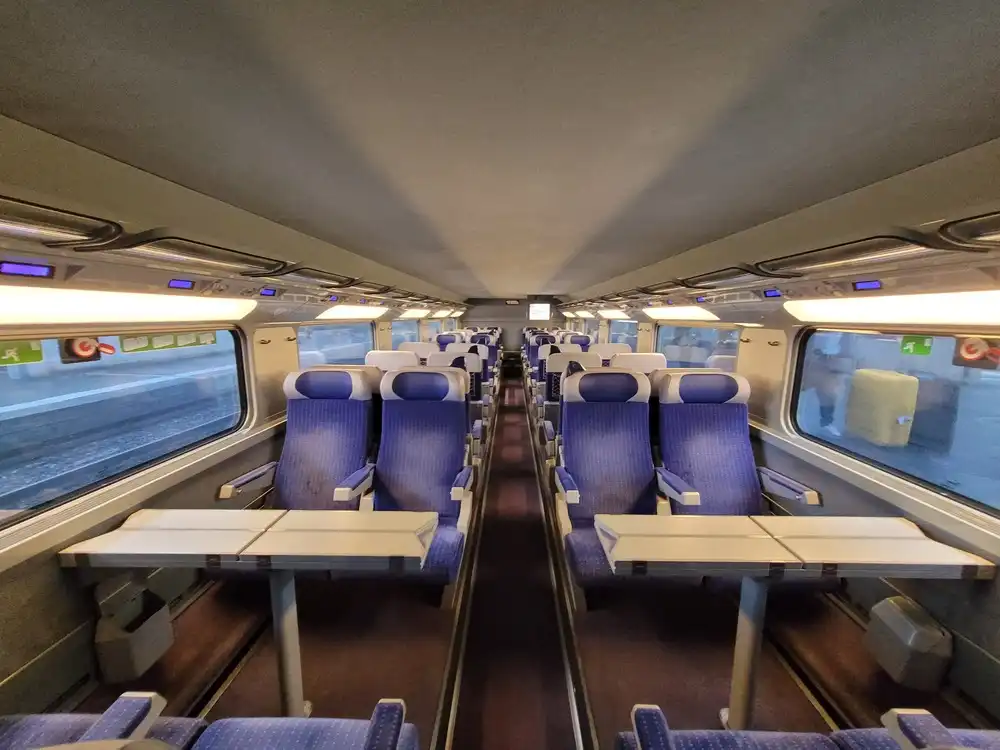 Second class seating room downstairs – “Euroduplex” design.
Second class seating room downstairs – “Euroduplex” design.
Once you’ve found the luggage rack, it should be just large enough to fit a bicycle packed to the official dimensions of under 130x90 cm. If the rack is full, you’ll have no choice but turn back and try your luck upstairs, as the end of each lower room is closed by a wall.
If your packed bicycle is larger than that – for example because you only removed the front wheel – don’t waste your time downstairs and head straight upstairs. Indeed, there is a longer corridor between the upstairs rooms, which are all connected.
The railing along the staircase may be an option to put your bicycle.
On the other side of the corridor, you’ll generally find a luggage rack next to a seat. Given that all TGVs have mandatory reservation, using this extra seat to put luggage might be an option if the luggage rack is full. However, putting a bicycle vertically is a risky option, so make sure it is well stuck in place, and be mindful of the staff’s intructions: some conductors prefer that the corridor is free, others find it too risky that an item might fall. In any case, you don’t want to risk the fine of up to 150€ for breaking the luggage policy (obstructing traffic, etc.).
In these trains, the first class area is similar, with the main luggage rack just above the stairs, and smaller luggage racks between some seats.
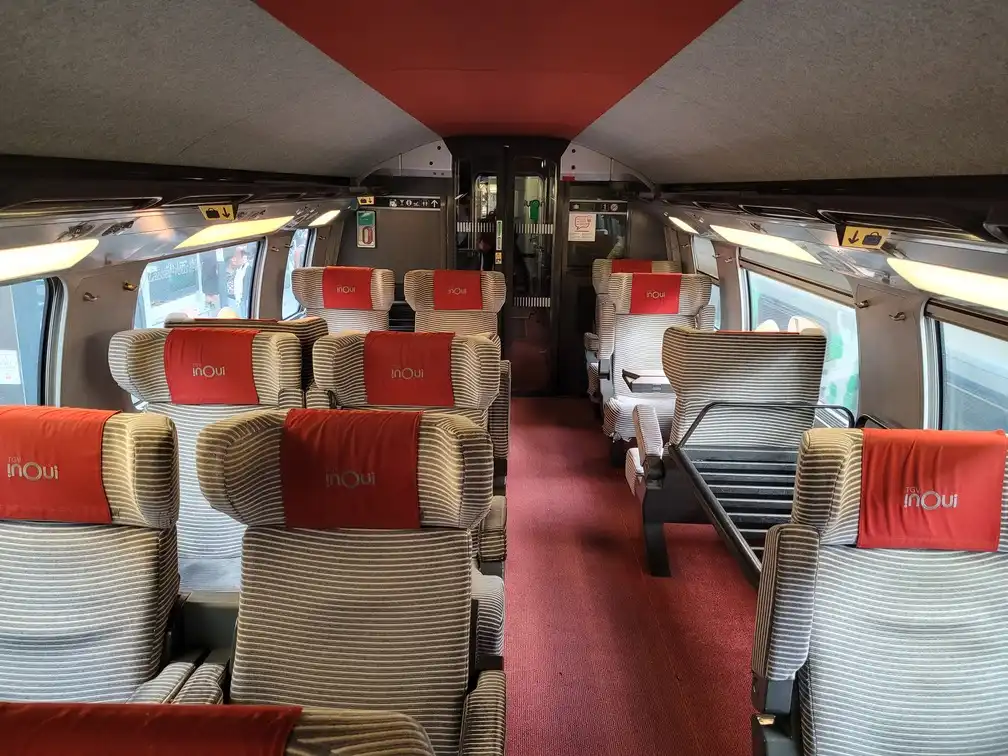 First class seating room upstairs – original design.
First class seating room upstairs – original design.
The latest design of Duplex TGVs was released for the opening of the Tours-Bordeaux high-speed line in 2017. As these trains were originally meant for destinations to the West of France, the design is nicknamed “Océane” – although they now also serve some destinations to the South-East.
The main difference for us cyclists is that it’s the first Duplex design to offer two dedicated spots for bicycles, as shown by the corresponding logo in the last carriage (number 8 or 18).
This bicycle space is located next to the entrance door, and would usually be occupied by other pieces of luggage – unless someone has reserved the bicycle spot in which case staff should be guarding it well.
The main drawback of this new design is that it only offers 2 bicycle spots, which isn’t much for a train with 556 seats. That’s also 5% more seats than the previous designs, meaning the few luggage racks in the seating areas have disappeared. Not to mention that some of the luggage shelves are now occupied by trash bins.
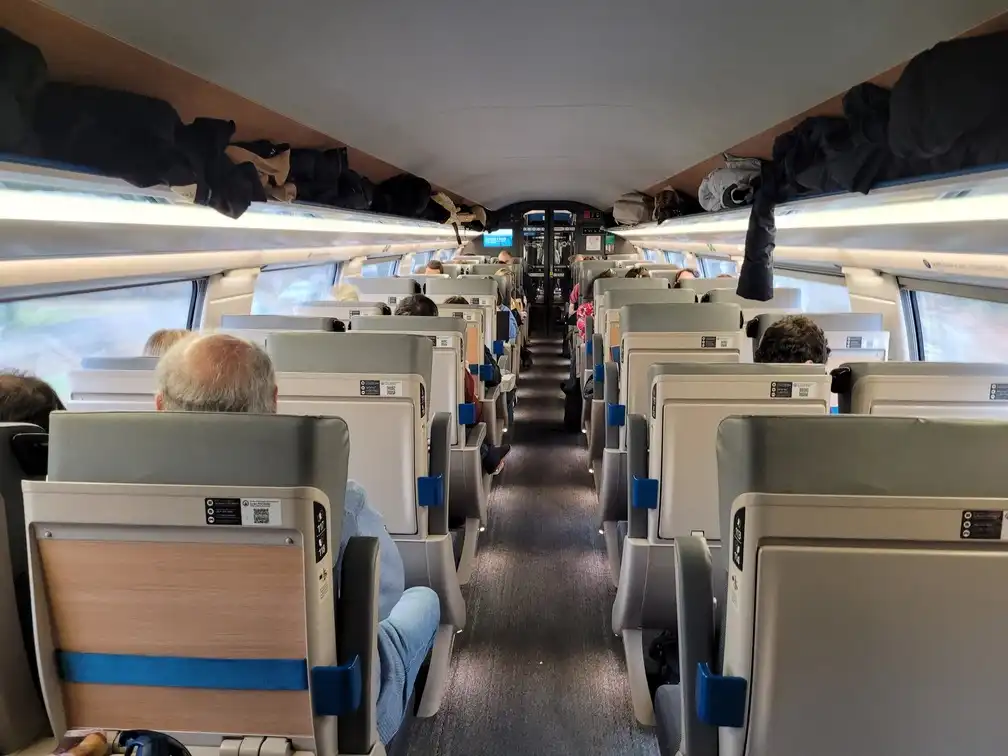 Second class seating room upstairs – “Océane” design.
Second class seating room upstairs – “Océane” design.
Therefore, if you’re travelling with a packed bicycle, your only bet will be the luggage racks in the corridor upstairs.
The upside is that the extra seats have disappeared in the corridor, replaced by slightly larger luggage racks… which is still not enough space during the holiday travel season.
OUIGO
I haven’t taken a OUIGO train in a while, and given the mandatory reservation and check-in process, I unfortunately don’t have any picture to share. Don’t hesitate to contact me if you have hands-on experience bringing your bicycle on board a OUIGO.
OUIGO is the low-cost version of TGV, consisting only of second class seats densified as much as possible. Therefore there is little space for luggage, let alone dedicated spots for assembled bicycles.
For lack of practical experience, I’ll point you to the official policy: you can bring one packed bicycle per person for an extra 5€ fee, as long as it fits within 130x90 cm. See the ticketing section of this guide for how to pay this fee, together with your regular ticket.
Given that OUIGO has a stricter check-in process than regular TGVs, with a surcharge for any oversized or additional luggage, I expect the staff to apply more scrutiny about the size of your packed bicycle. Therefore, I would strongly advise sticking to the official dimensions, i.e. use a 2-wheels-removed package.
Intercity trains
With the advent of high-speed rail, almost all traditional intercity services in France have been replaced by TGVs or regional trains. Of the remaining day-time services, 3 have mandatory reservation: Paris-Clermont-Ferrand, Paris-Toulouse via Limoges, and Bordeaux-Marseille. The other day services under the “Intercités” branding are very much like regional trains – in particular they don’t require a seat reservation – except that they span several regions. Night trains also appear under the Intercités brand, see below.
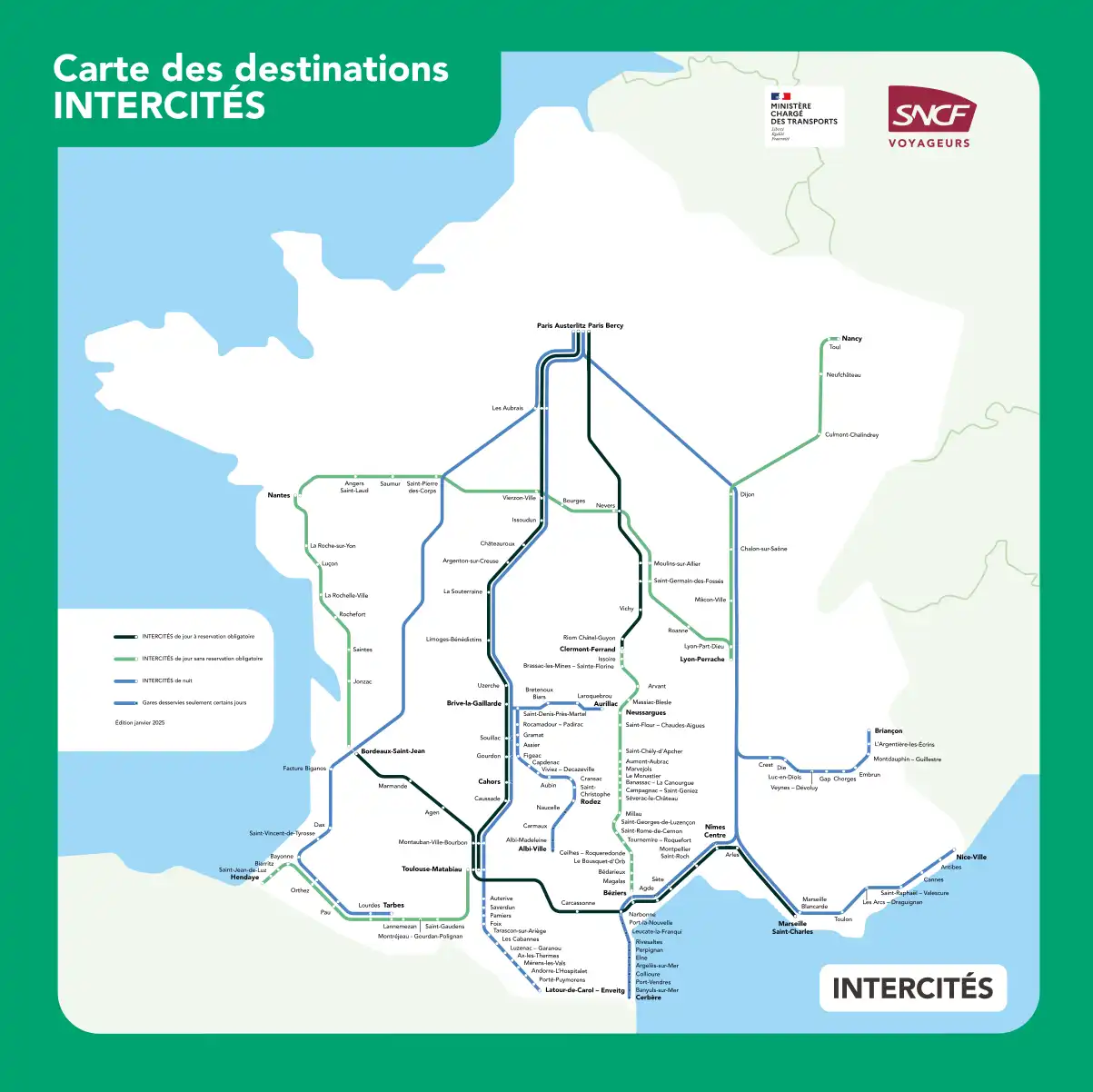 Map of all the Intercités services in 2025. Source: SNCF.
Map of all the Intercités services in 2025. Source: SNCF.
Given the limited scope of this service, I didn’t get a chance to experience it in practice. Don’t hesitate to contact me if you have practical feedback with these trains.
To bring an assembled bicycle on board Intercités trains, you’ll have to reserve a spot together with your ticket, costing 10€ on the trains with mandatory reservation (Paris-Clermont-Ferrand, Paris-Toulouse via Limoges, and Bordeaux-Marseille), and 5€ on the other intercity lines. A packed bicycle is free of charge if it fits within the usual SNCF limit of 130x90 cm (i.e. with both wheels removed).
Intercity trains are operated with similar rolling stock as regional trains, so the bicycle spaces should look similar, see below. In particular, services with mandatory reservation should still be operated with Corail carriages.
 Typical bicycle space in Corail carriages.
Typical bicycle space in Corail carriages.
OUIGO Classique
OUIGO Train Classique is a rebranding as OUIGO – painted in flashy pink – of legacy intercity trains made of Corail carriages. These trains cover a few destinations (Paris-Rennes, Paris-Nantes and Paris-Bruxelles) as a cheaper alternative to the faster TGVs on the same lines.
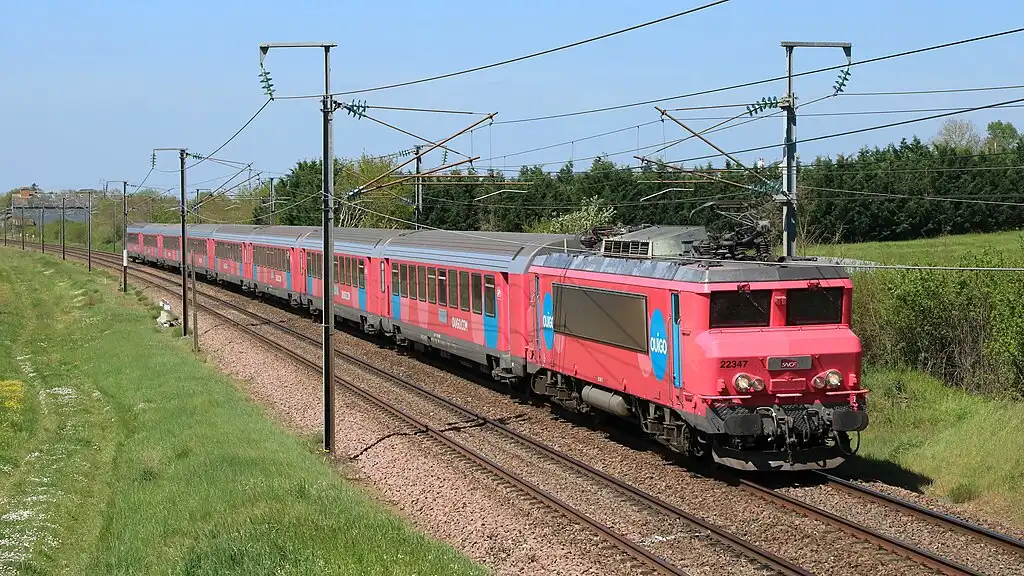 OUIGO Classique by Cramos on Wikimedia Commons. License CC BY-SA 4.0.
OUIGO Classique by Cramos on Wikimedia Commons. License CC BY-SA 4.0.
Given the limited scope of this service, I didn’t get a chance to experience it in practice. Don’t hesitate to contact me if you have practical feedback with these trains.
You’ll have two options to transport a bicycle on board these trains, which you can add to your cart in the SNCF Connect app or on the dedicated OUIGO booking website: assembled bicycle for 10€ or packed bicycle for 5€ (must fit within 130x90 cm, i.e. with both wheels removed). As OUIGO Classique is operated with Corail carriages, the bicycle space likely looks similar: a couple of vertical hooks next to an entrance door.
 Typical bicycle space in Corail carriages.
Typical bicycle space in Corail carriages.
Night trains
After almost disappearing, the domestic night train network has expanded again in France since 2020, with services between Paris and various destinations in the South of France. To travel with an assembled bicycle, you can reserve a spot for 10€, to book together with your train ticket.
For the night trains from Paris to Berlin and Vienna, see the international trains section, as these are operated by ÖBB with different rules and train designs.
You’ll typically find one carriage with a dedicated bicycle space consisting of 4 vertical spots next to the entrance door, opened to the corridor.
Additionally, there may be a carriage with a couple hooks in a smaller space next to the entrance.
If you want to bring a packed bicycle, be aware that space is limited in the couchette compartments, be they second class (6 couchettes per compartment) or first class (4 couchettes per compartment). Note that unlike night trains in Central or Eastern Europe, you won’t find any premium compartment with 3 or fewer beds.
You might find a bit of luggage space in the seating compartment at the end of the train (arranged as 2+1 seats), or try your luck around the official bicycle spots.
Regional trains
As the name goes, regional trains are managed by the regions. You’ll find 12 regions in continental France, so I won’t give a detailed description of which train models run where. Generally speaking, all regional trains are operated by SNCF at the time of writing, but this will soon change with region Sud-PACA contracting with Transdev as of 29 June 2025. In any case, the vast majority of services are operated by a handful of regional train models, all of which have some form of bicycle space. You’ll find an overview of the most common models in this section.
TER 2N NG
Starting with double-deck trains, the TER 2N NG is a common option, introduced in 2005. Despite it’s “new generation” name, it’s not the latest model anymore.
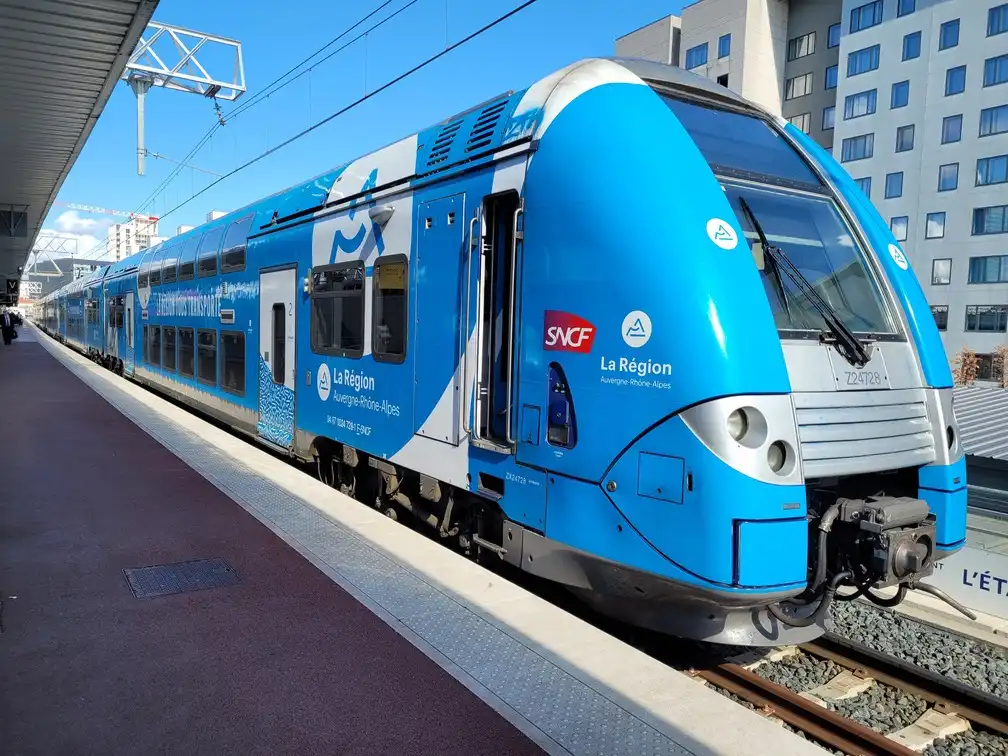 TER 2N NG in region Auvergne-Rhône-Alpes.
TER 2N NG in region Auvergne-Rhône-Alpes.
Inside this train, you’ll find bicycle spaces downstairs, consisting of a group of vertical hooks surrounded by foldable seats. You therefore might have to ask passengers to free up their spots to place your bicycle.
Regio 2N
A more recent model is the Regio 2N, introduced in 2013. Although the manufacturer is different, you might not notice the difference at first sight (apart from wearing colors of a different region), but the nose of the train is shaped slightly differently.
The main difference lies inside the train. As this model is more recent it’s also friendlier to bicycles: you place your bicycle horizontally or diagonally rather than vertically, and the bicycle spaces are near the doors. The entrance area is in fact single-level and step-free, another nice evolution of the more recent train models.
This would also be a good space to put a disassembled bicycle (for example if you couldn’t make a reservation).
To increase the number of bicycle spots, some regions even apply a temporary transformation in summer: covering the seats in an entire carriage with a dedicated protection and letting you put your bicycle on top. Far from ideal, but an interesting short-term solution to cope with increasing demand, seen for example in Bretagne in 2024.
It appears that this solution is discontinued in Bretagne in 2025, as the region mentions it has increased bicycle capacity in all its trains.
AGC
Introduced in 2004, the AGC is the single-level sibling of the TER 2N NG.
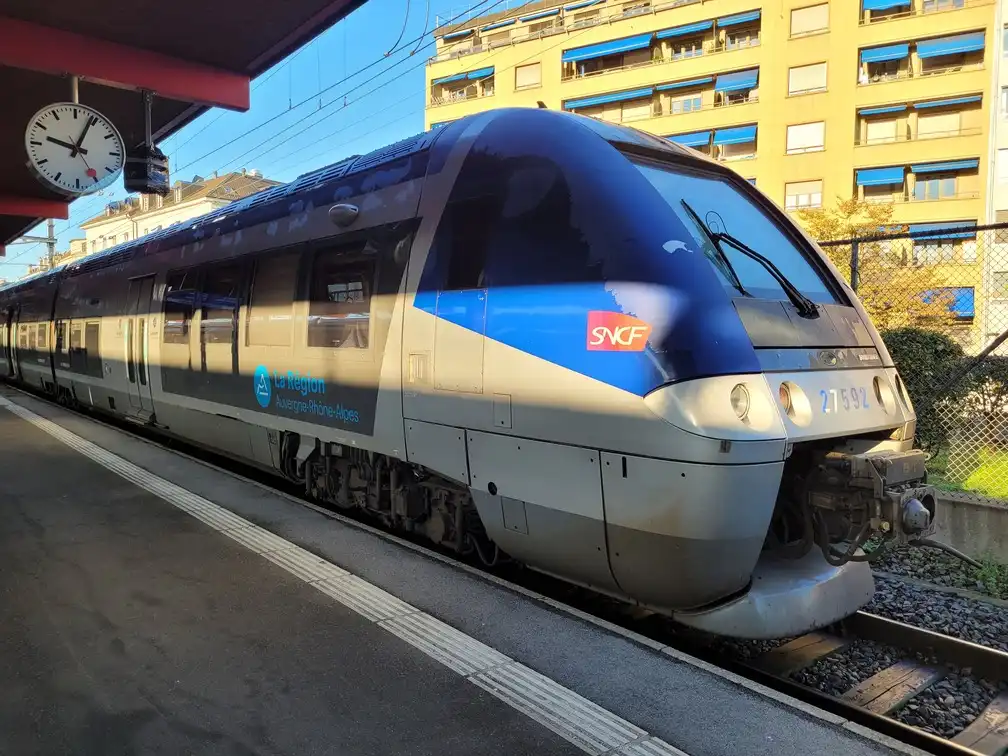 AGC in region Auvergne-Rhône-Alpes.
AGC in region Auvergne-Rhône-Alpes.
As such, the inner design is similar, in particular the bicycle space also consists of vertical hooks surrounding foldable seats.
If you travel with a packed bicycle, you may find the “bar” space convenient (no food nor drinks on board though) next to some of the doors.
Régiolis
The Régiolis was introduced in 2013 and you could think of it as the single-level sibling of the Regio 2N.
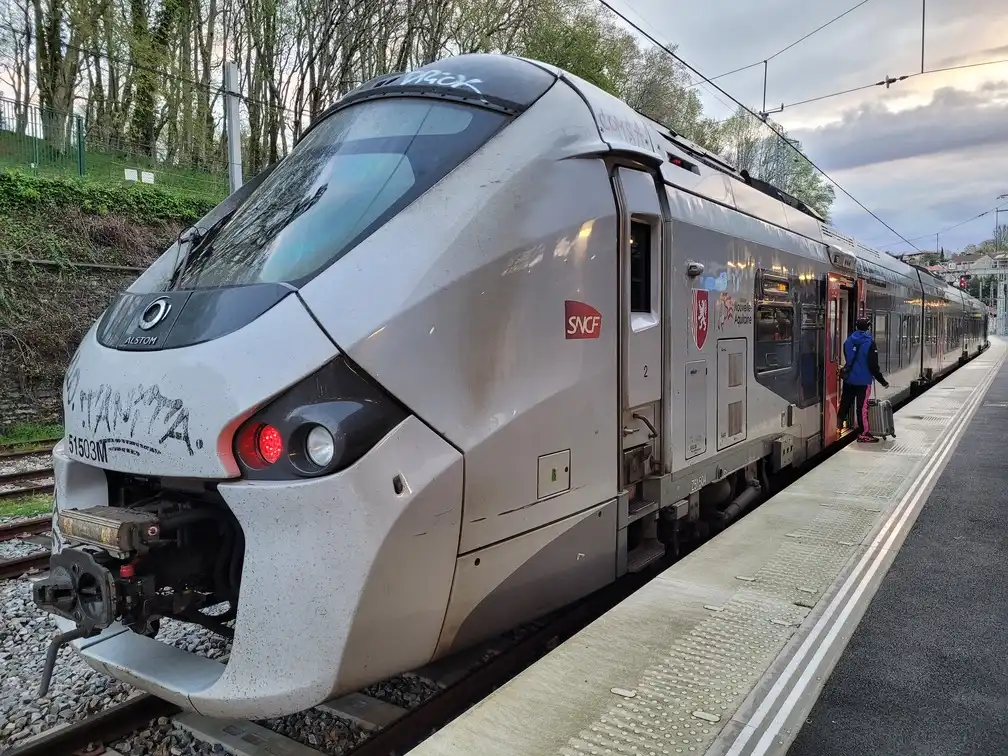 Régiolis in region Nouvelle-Aquitaine.
Régiolis in region Nouvelle-Aquitaine.
As such, you’ll find a similar convenient evolution: the bicycles are stored horizontally, next to the entrance doors.
This model also features multi-use spaces with foldable seats, to accommodate wheelchair users in priority. If the space is available, it can be a good option to store a packed bicycle.
A TER
A common type of train for non-electrified branch lines is the A TER, introduced in 1999. This diesel model consists of a single carriage with 2 doors. Sometimes a few of these are attached together.
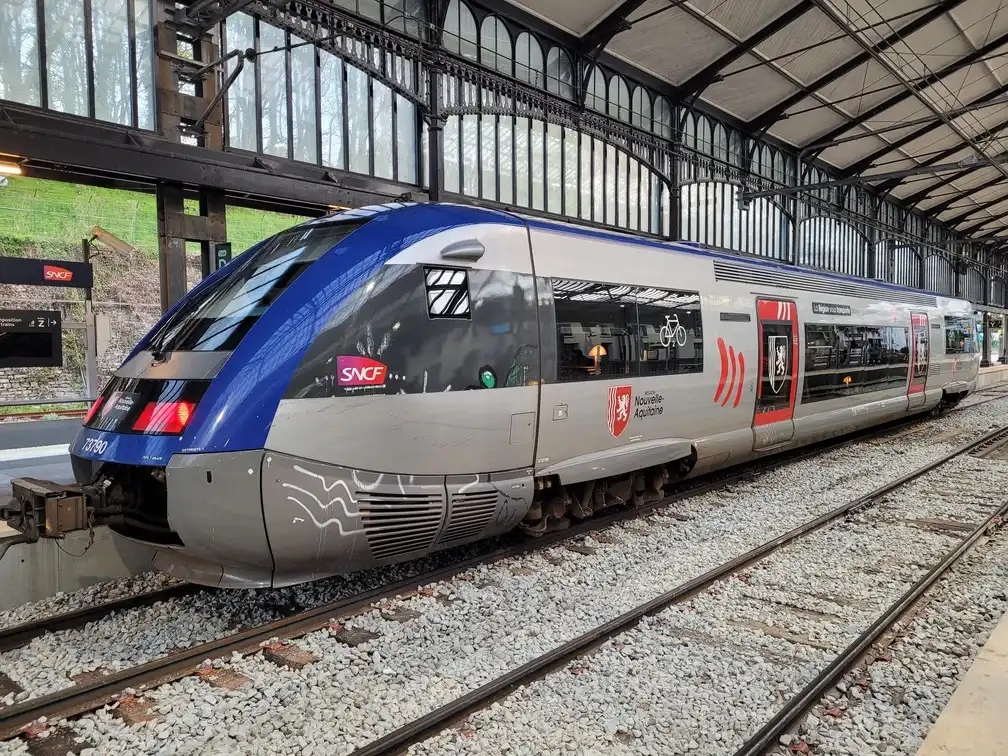 A TER in region Nouvelle-Aquitaine.
A TER in region Nouvelle-Aquitaine.
Inside, you should find a two vertical bicycle spots between foldable seats, next to the doors.
Corail
Lastly, the Corail model consists of “traditional” carriages, introduced in 1975. The remaining ones are nowadays mostly used for regional services, as most of the intercity services have been replaced by high-speed trains.
These carriages come in various flavors, for instance here is one with an integrated driving cabin (instead of a separate locomotive).
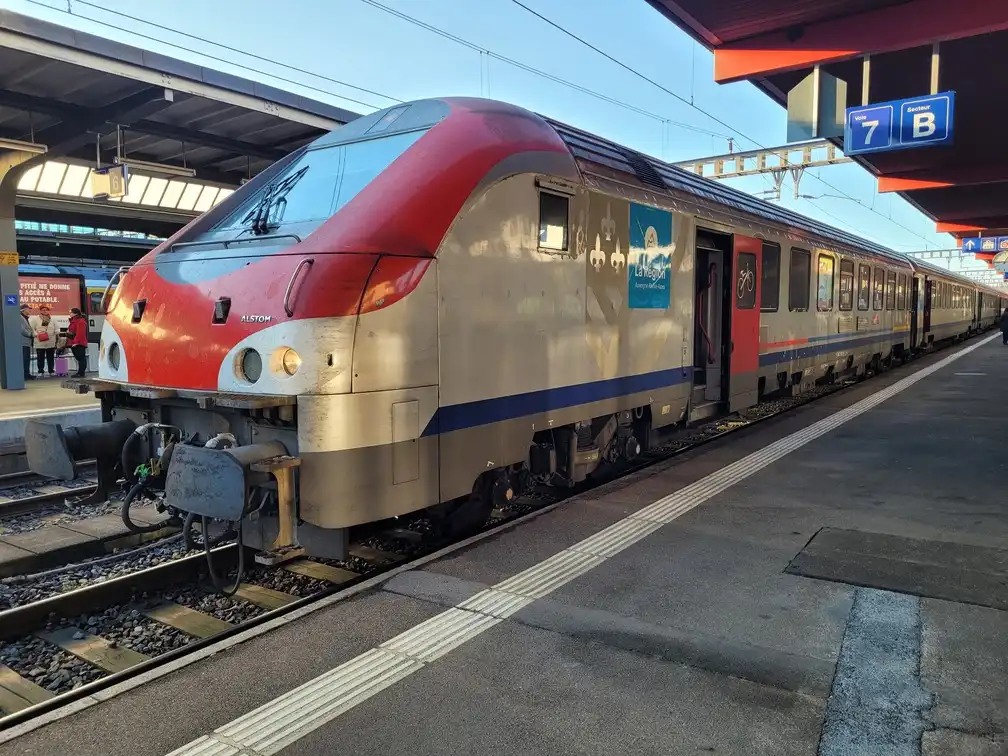 Corail in region Auvergne-Rhône-Alpes.
Corail in region Auvergne-Rhône-Alpes.
The usual setup to bring assembled bicycles is a couple of vertical hooks next to an entrance door.
You may also find a larger bicycle space, with 3 vertical hooks on each side.
On some services in some regions, you can use the first class carriages with a second class ticket, and may find that despite the lack of dedicated bicycle spot a bit of acrobatics will do the trick!
The seats are generally well padded and comfortable, with large overhead luggage space. However there is no luggage racks nor shelves for larger items, so a packed bicycle would rather fit in the entrance area.
Lastly, some Corail carriages feature a wide storage room.
Unfortunately, this large side door won’t open, so you’ll have to use the stairs of the regular narrow door, but once inside you should have plenty of space to store many bicycles – if you’re lucky enough to fall on this special carriage!
International trains
Located at the crossroads of Western Europe, France has many neighboring countries that you may want to reach with your bicycle on a train. Unfortunately, seamless transport of assembled bicycles is rather the exception on these borders.
Belgium
This section is empty. Don’t hesitate to contact me if you have experience on this route.
England
Although I have experience taking trains between France and England, I haven’t tried bringing a bicycle on board. Don’t hesitate to contact me if you have practical experience bringing a bicycle on this route.
The only railway connection from France to England and the rest of the UK is the Channel Tunnel. The main services running there are high-speed trains operated by Eurostar between Paris and London. The Eurostar trains themselves have a relatively generous interior space (in comparison with TGVs), but oversized luggage are charged an extra fee.
In particular, assembled bicycles aren’t allowed on Paris-London services, only bicycles stored in a box or bag of at most 165x90x36 cm. This means that a front-wheel removed bag is in principle sufficient. Note however that there is an extra fee of 45 EUR if you book at least 48 hours in advance (or 45 GBP if you book from the British version of the website, so I recommend switching the currency to Euro).
At the time of writing, the official website mentions that the following trains have available space for bicycles.
London to Paris: Any train departing London between 08:01 (train 9008) and 15:31 (train 9036).
Paris to London: Any train departing Paris between 11:13 (train 9023) and 18:13 (train 9051).
However, these spaces may sell out, so I would recommend in any case emailing travelservices@eurostar.com to confirm availability before buying your ticket.
Lastly, be mindful of the check-in times: due to passport and customs checks, you need to arrive in advance at the train station (75 to 90 minutes ahead at the time of writing). I would especially recommend coming early if you have a bicycle. And of course, don’t forget your passport and to thoroughly check which other travel documents you may need.
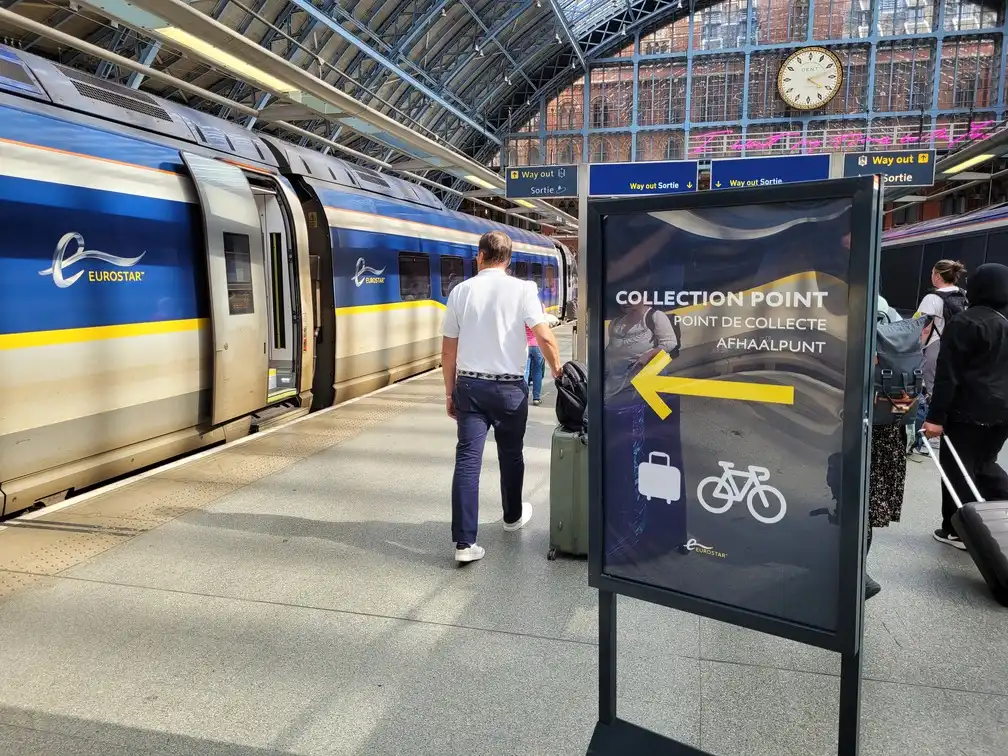 Collection point to get back your bicycle after a Eurostar trip.
Collection point to get back your bicycle after a Eurostar trip.
An alternative to Eurostar is Le Shuttle, a train that only spans the Channel Tunnel and is mainly meant to transport passengers within their own car. It offers the option to carry bicycles for 50 EUR (including the passenger), but only twice per day in each direction and booking must be done at least 2 weeks in advance (10 working days) via a contact form on the website. As usual, prefer to book on the French website in Euro, otherwise the fee is 50 GBP.
One last option would be to take a ferry rather than a train, for example between Calais and Dover with P&O Ferries or DFDS (Irish Ferries also covers this route but doesn’t welcome passengers without a motor vehicle…). There are of course other harbors than Calais to cross the Channel by ferry: Dieppe, Le Havre, Caen, Cherbourg, St. Malo and Roscoff. You may find inspiration on UK Ferry Map, Interrail’s ferries page or on the EU map of ferry routes.
If you’re wondering about the carbon footprint of taking a ferry, crossing at the narrowest part of the sea on a simple ferry without bedrooms nor casinos will definitely limit the impact.
Germany
This section is empty. Don’t hesitate to contact me if you have experience on this route.
Italy (and Trenitalia)
France is separated from Italy by the Alps mountains. As such, there are only a few railway crossings between the two countries.
In the middle of the Alps, the Fréjus Rail Tunnel connects Chambéry to Turin via Modane and Oulx. This route is served by a few Paris-Milan high-speed services, split between TGVs from SNCF and Frecciarossa from Trenitalia. Note that these TGVs run straight to Chambéry, while these Frecciarossa stop in Lyon, so if you start from Lyon you should check with Trenitalia.
None of these trains offer options to transport assembled bicycles, so you’ll have to pack them as luggage.
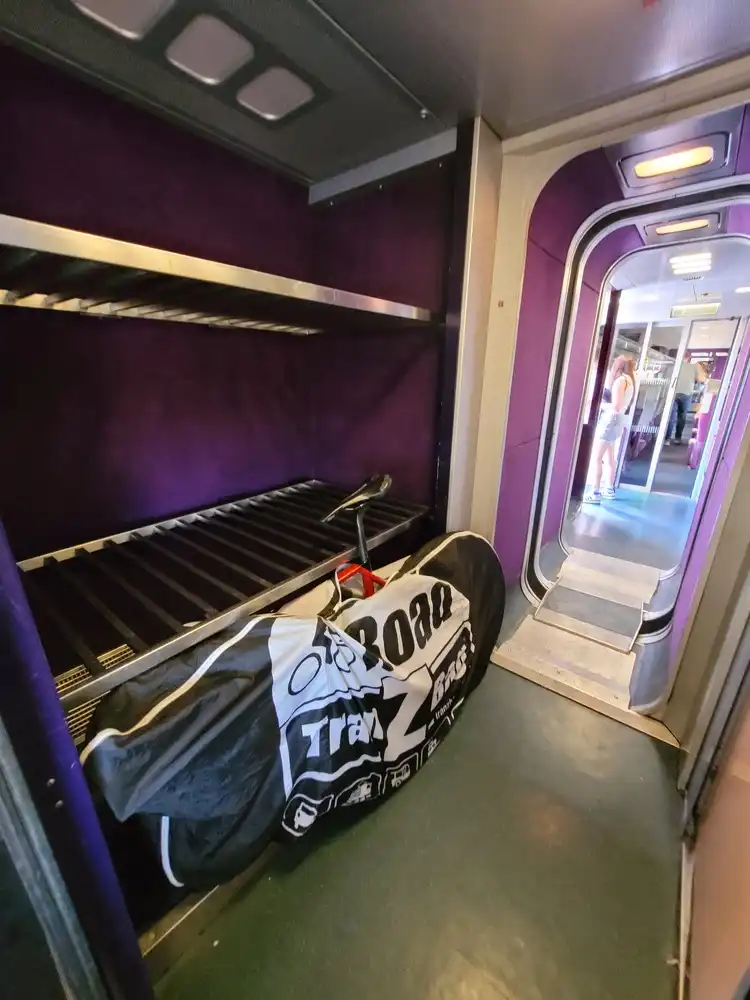 The kind of luggage rack you should find on board Paris-Milan TGVs from SNCF.
The kind of luggage rack you should find on board Paris-Milan TGVs from SNCF.
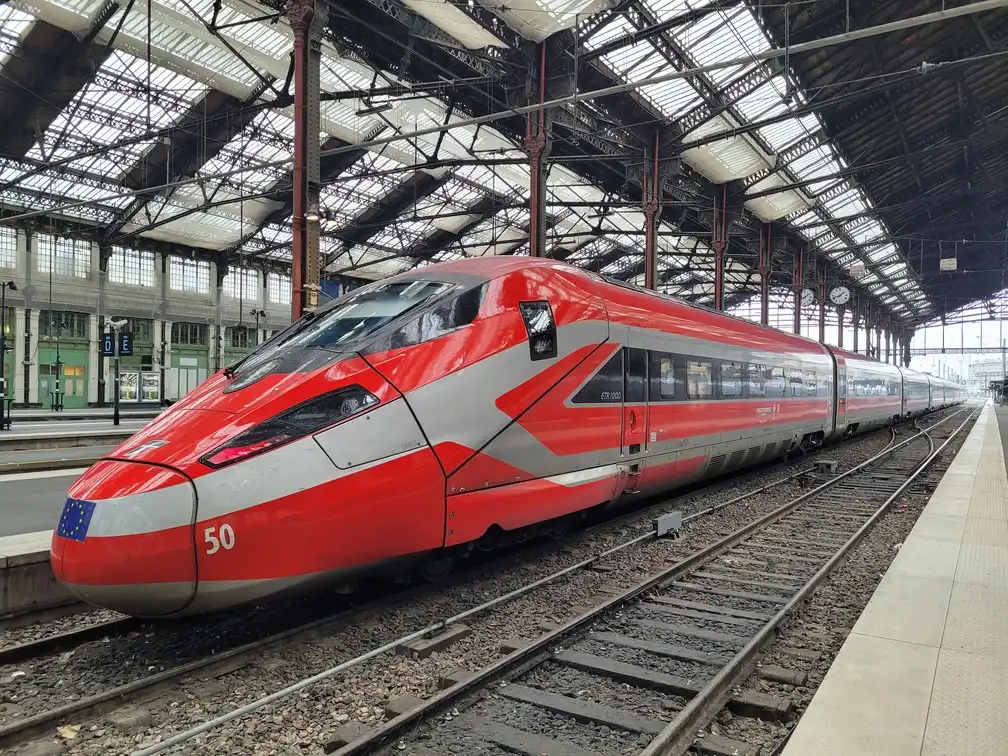 Frecciarossa 1000 train from Trenitalia.
Frecciarossa 1000 train from Trenitalia.
With Trenitalia France, the official policy is somewhat contradictory: it allows packed bicycles as long as one wheel is removed, but only if packed within 110x80x45 cm. In principle, even removing both wheels isn’t enough to fit within such strict dimensions. In practice, your best bet on board Frecciarossa 1000 trains is to put your packed bicycle in the space between doors (attaching it with a small lock to avoid falling), as unfortunately luggage space is sparse in these trains (in second class at least).
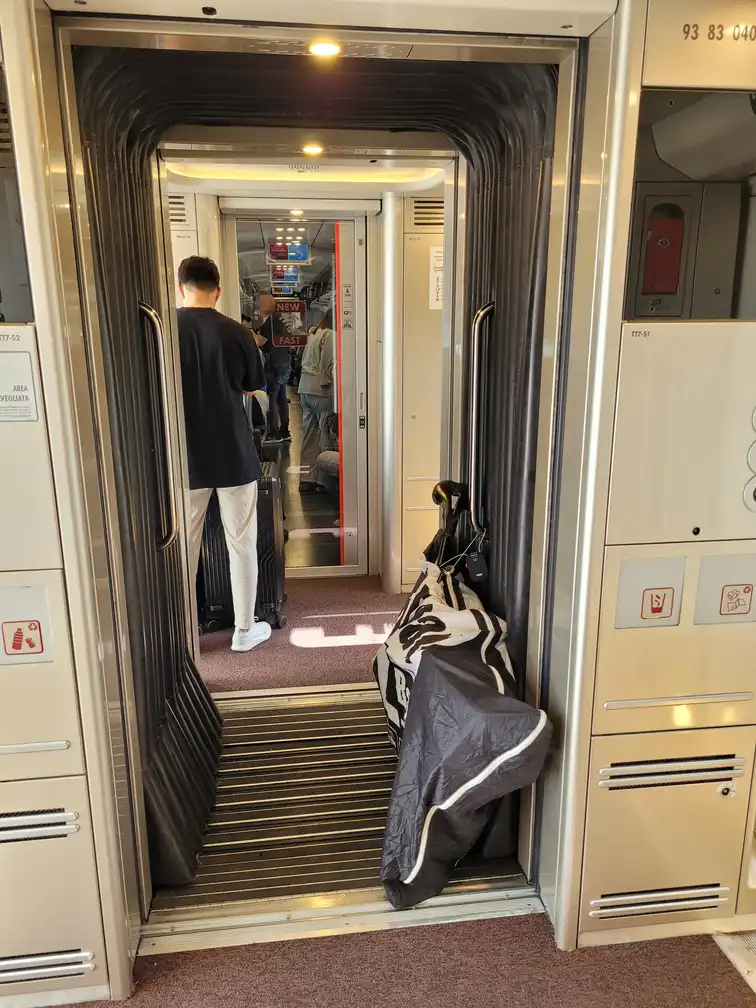 Inside the Frecciarossa 1000 from Trenitalia.
Inside the Frecciarossa 1000 from Trenitalia.
The other main route to Italy is along the Mediterranean coast, connecting Marseille with Genoa via Menton (France) and Ventimiglia (Italy). On this route, you’ll find regional trains in France that run until Ventimiglia and offer bicycle spaces for free without reservation. On the Italian side, a mix of regional and intercity trains continue from Ventimiglia along the coast.
A third railway between Italy and France is a small regional train running through the mountains in the same area, connecting Ventimiglia (Italy) - Tende (France) - Cuneo (Italy), and operated by the Italian railways. There is also a branch called Train des Merveilles connecting Nice to Tende within France and operated by SNCF (it however doesn’t run in 2025 due to construction works).
Another alternative is to travel to Italy via Switzerland, in particular if you start from the North-East of France. Indeed, there are frequent services connecting Milan to Zurich, Basel and Geneva, and there are regular services to these 3 cities from France. This may be more expensive than a direct train to Italy, unless you have an Interrail pass in which case crossing Switzerland will be free, and with convenient options to transport a bicycle.
Luxembourg
This section is empty. Don’t hesitate to contact me if you have experience on this route.
Spain (and Renfe)
Despite France sharing its longest border with Spain, there are only a few railway border crossings, notably due to the Pyrenees mountains. On the Atlantic coast, the border is a river that splits the twin cities of Hendaye (France) and Irun (Spain). You can reach Hendaye by TGV from Paris via Bordeaux, by TER or Intercité from Bordeaux or Toulouse, or using the Paris-Bayonne night train and completing Bayonne-Hendaye with a TER.
Mainline services further into Spain only start in Irun, so you’ll have to cross the border using your bicycle on the pedestrian bridge. Alternatively, the Euskotren operator runs a metro/light rail service into the Basque Country starting from Hendaye, right in front of the SNCF station.
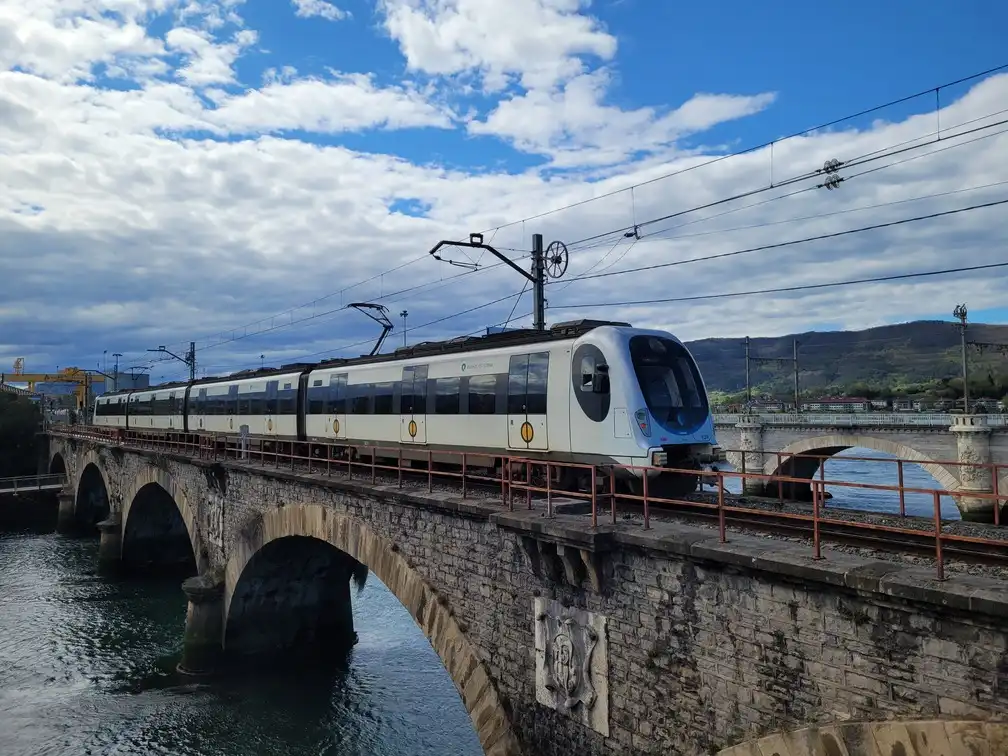 Euskotren on the border bridge.
Euskotren on the border bridge.
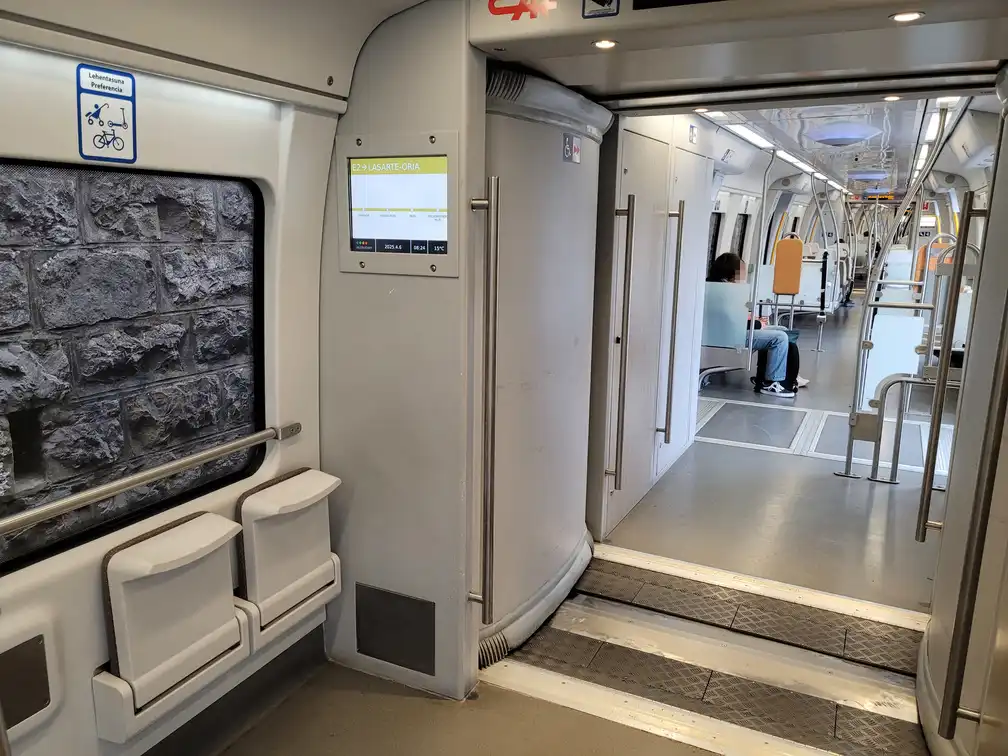 Bicycle space inside Euskotren.
Bicycle space inside Euskotren.
On the Mediterranean coast, a high-speed line directly connects Perpignan (France) to Figueres (Spain) and onwards to Barcelona. Unfortunately, there are currently only 4 return services per day on this line!
- 2 Paris-Barcelona services operated by SNCF. These use Euroduplex TGVs where bicycles must be disassembled and packed.
- 1 Lyon-Barcelona and 1 Marseille-Madrid service operated by Renfe. These use Renfe Class 100 AVE trains, which look similar to single-level TGVs, but with a completely different interior design. In particular, they offer a storage room at one end of the train, where you should be able to transport your packed or even assembled bicycle, after asking the staff.
Sometimes seats are sold out for the whole route (especially at peak holiday season), but don’t despair, there may still be available spots for the Montpellier-Barcelona segment that all 4 trains serve, so don’t hesitate to split your search.
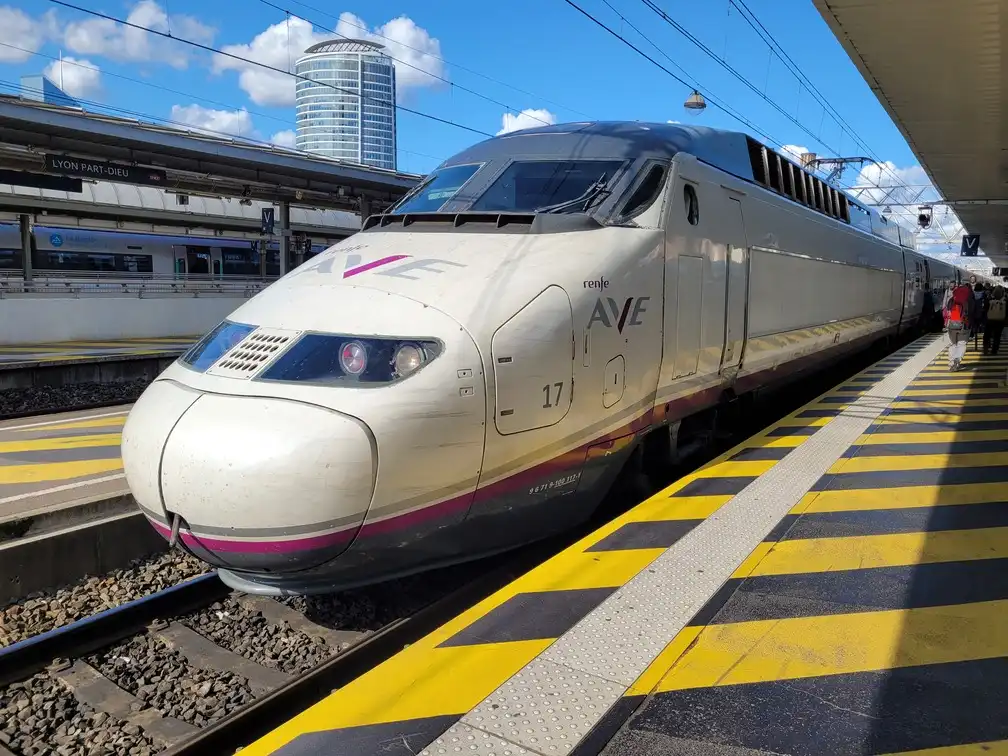 Renfe Class 100 operating on Lyon-Barcelona and Marseille-Madrid.
Renfe Class 100 operating on Lyon-Barcelona and Marseille-Madrid.
 Entrance space in a Renfe Class 100.
Entrance space in a Renfe Class 100.
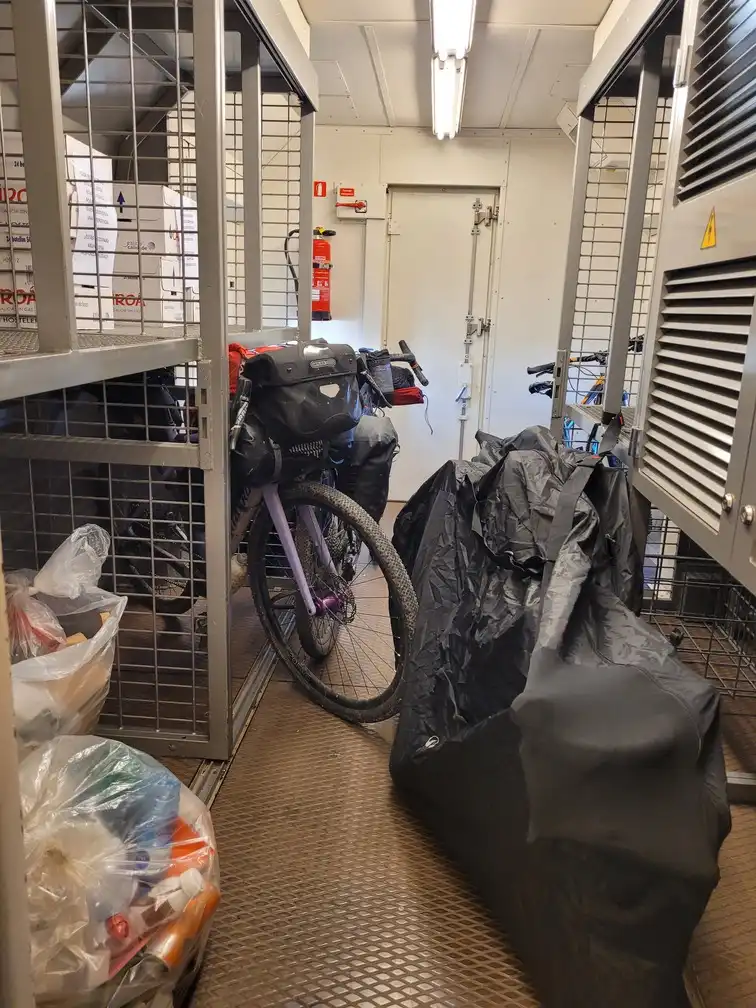 Storage room at the end of the train, where bicycles can travel.
Storage room at the end of the train, where bicycles can travel.
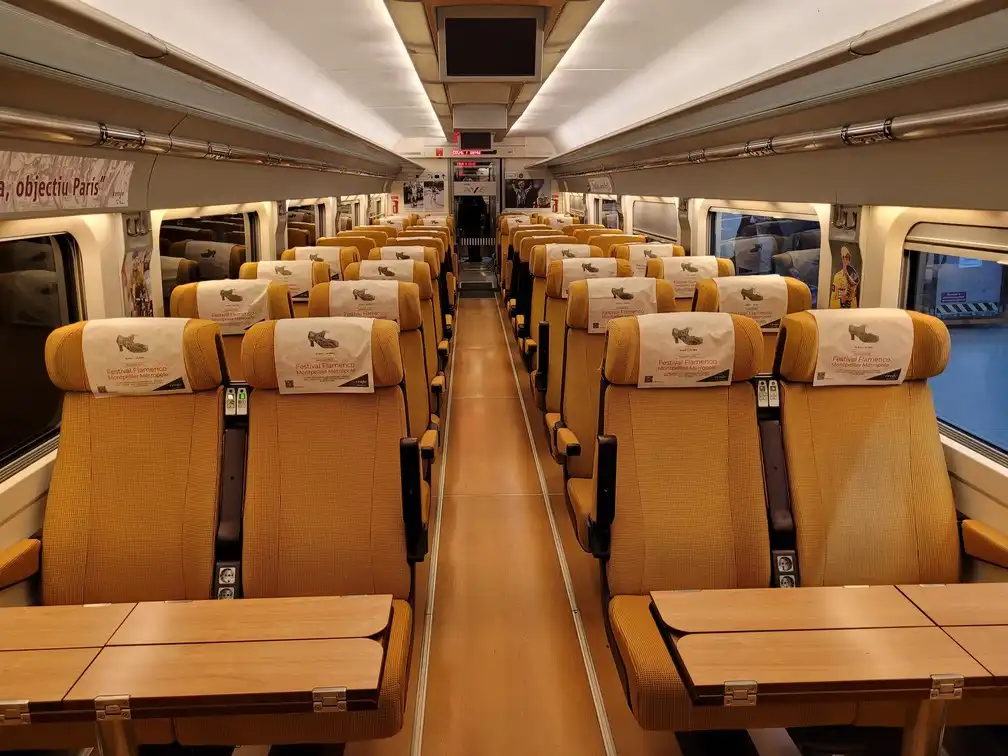 Seats in a Renfe Class 100. Vintage and comfortable.
Seats in a Renfe Class 100. Vintage and comfortable.
Lastly, you’ll find regional services on the historic Mediterranean line between Perpignan and Barcelona via Portbou, and in the Pyrenees mountains between Toulouse and Barcelona via Latour-de-Carol. There are even night trains connecting Paris to Latour-de-Carol. However, these regional services are not very frequent and the timetables aren’t coordinated between SNCF and Spanish operators, so these routes may be quite slow.
Switzerland
See also the page dedicated to Switzerland to continue your journey there.
There are two groups of trains between Switzerland and France.
- High-speed trains between Paris and either Geneva-Lausanne or Basel-Zurich, operated by TGV Lyria (a subsidiary of SBB and SNCF).
- Regional trains operated by SNCF, the main ones are Geneva-Lyon, Geneva-Grenoble-Valence and Basel-Mulhouse-Strasbourg. See the corresponding policies and pictures.
The high-speed trains from Lyria are pretty much the same as TGVs offered by SNCF within France (apart from the logos), and the Lyria fleet should now only contain Duplex TGVs. As the Lyria trains all follow the Euroduplex interior design, unfortunately none of them have dedicated spots for bicycles. As such, the rules to bring bicycles are practically the same as SNCF: transporting assembled bicycles isn’t possible, and disassembled bicycles can be brought free of charge but must fit within a package of 130x90 cm.
-
Technically, SNCF Connect is a travel agency separate from SNCF Voyageurs (the railway operator) and therefore also a third-party reseller, but all of these SNCF entities are subsidiaries of the SNCF group. ↩
